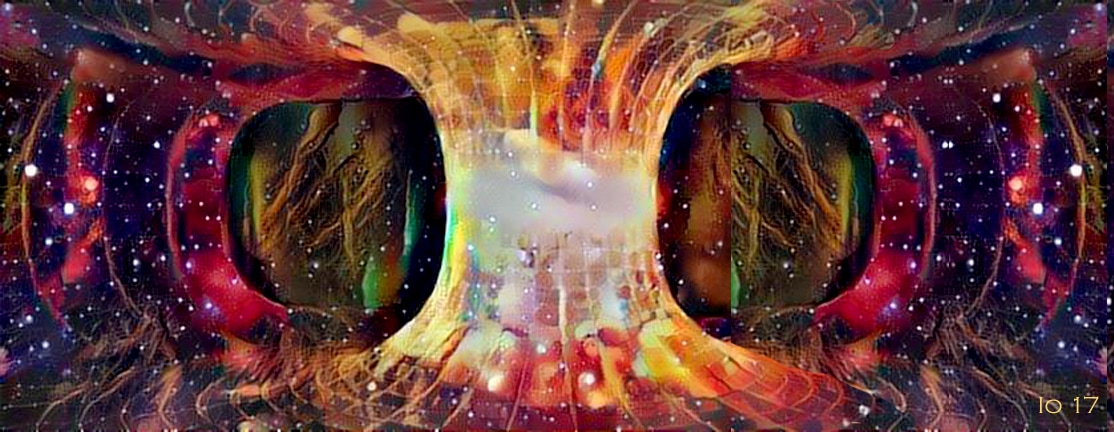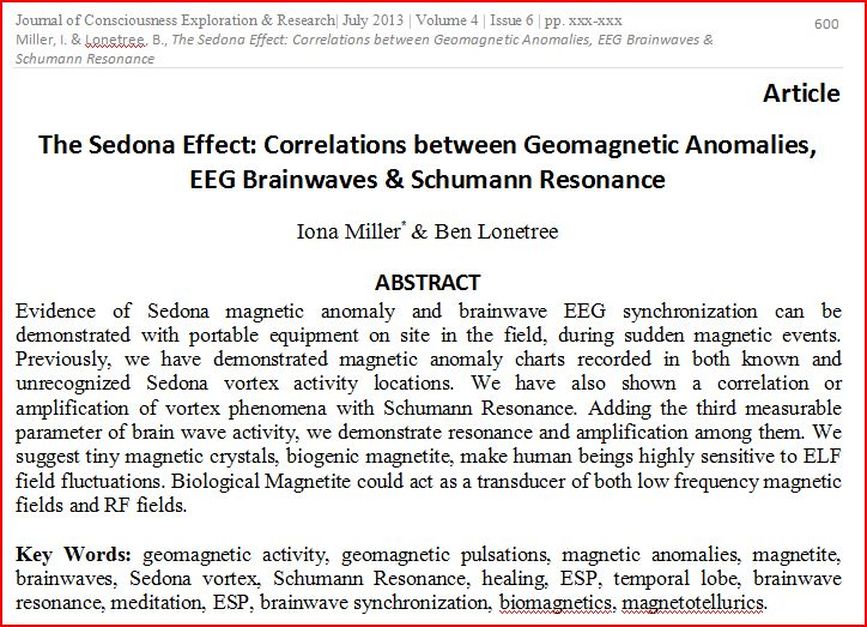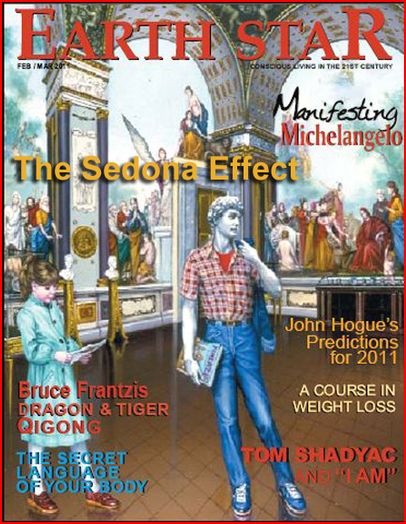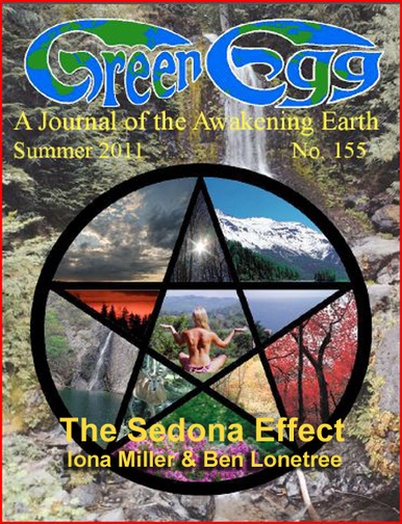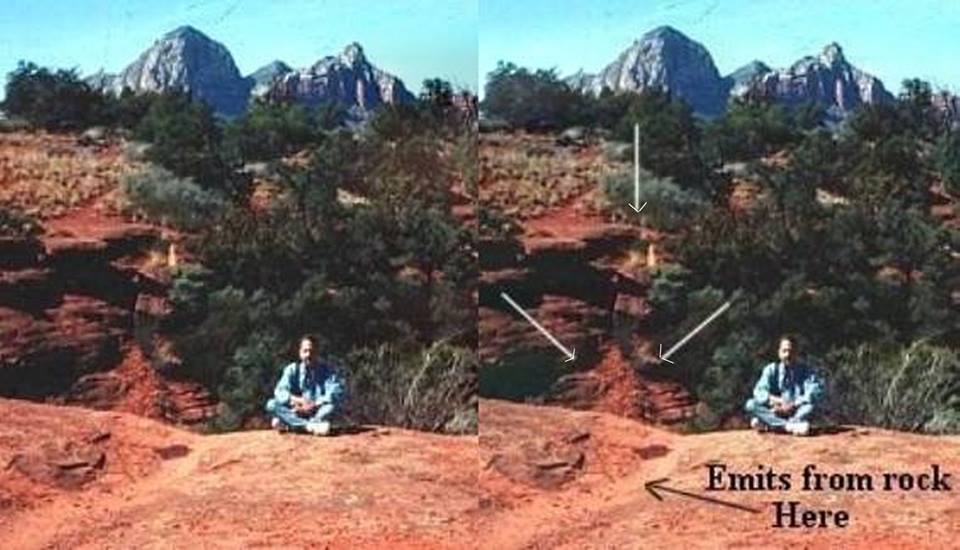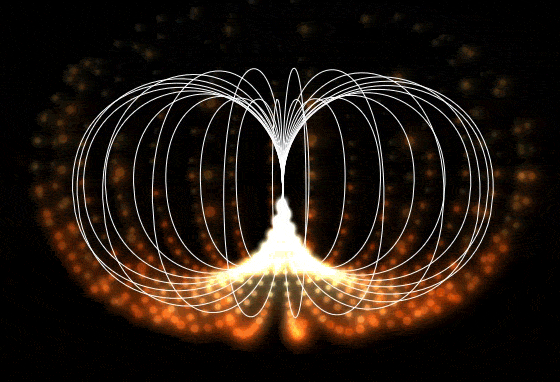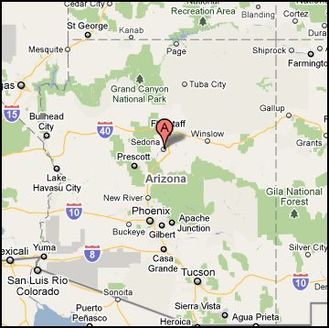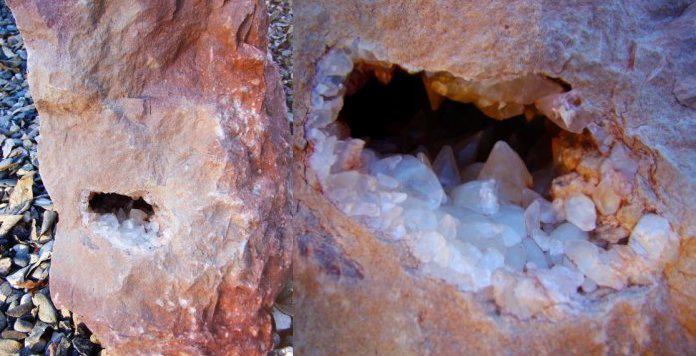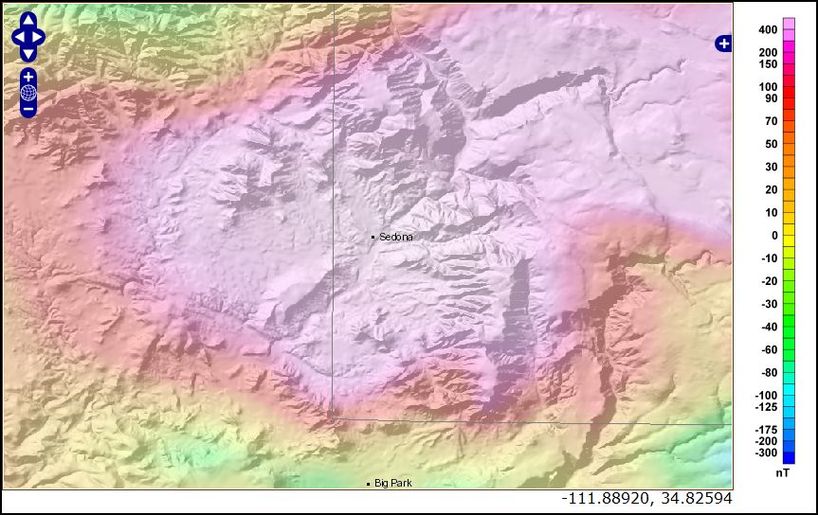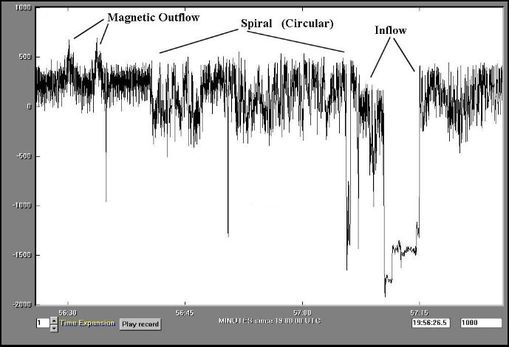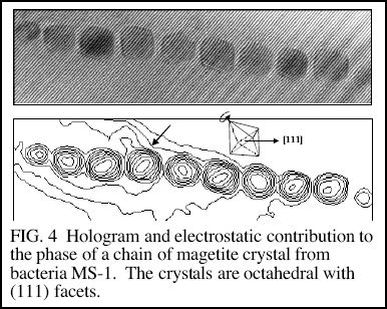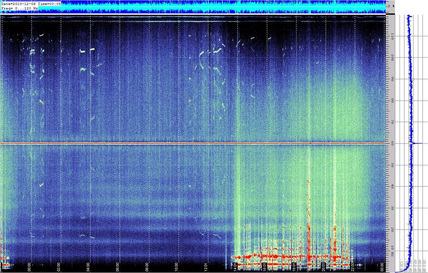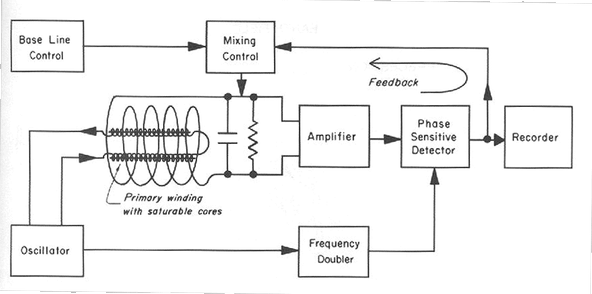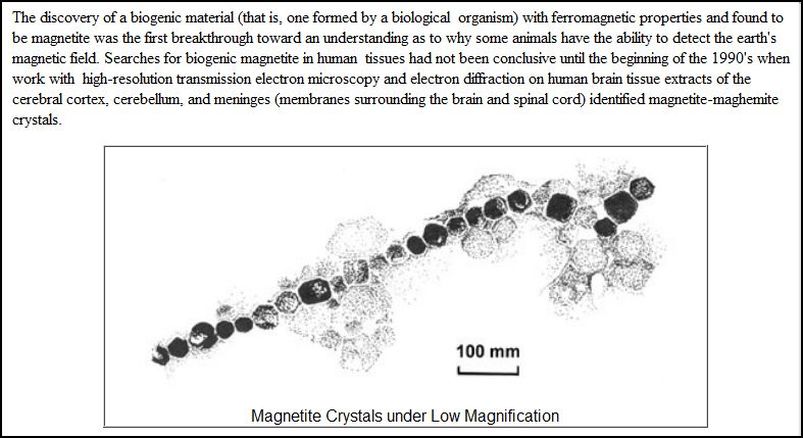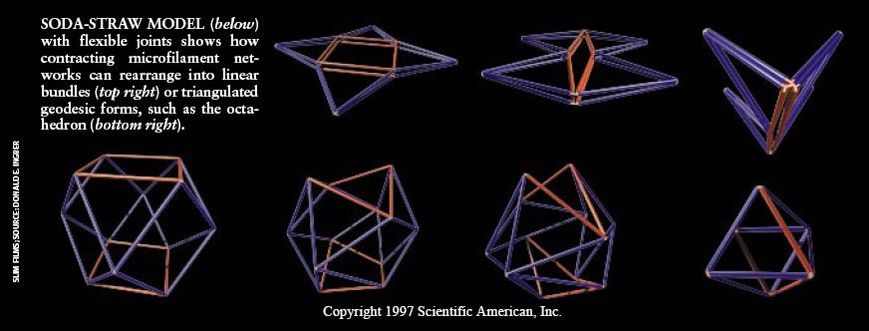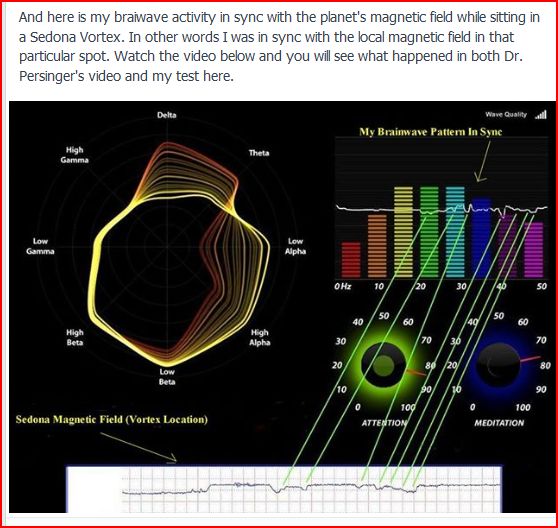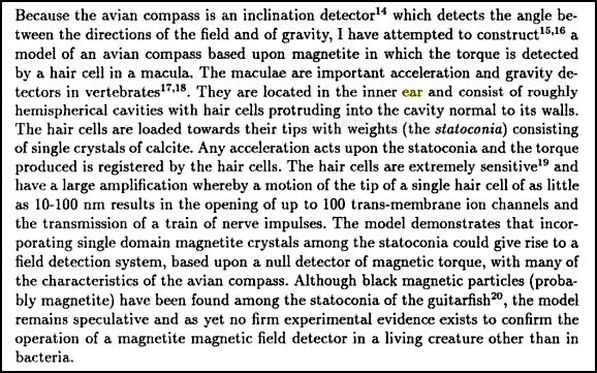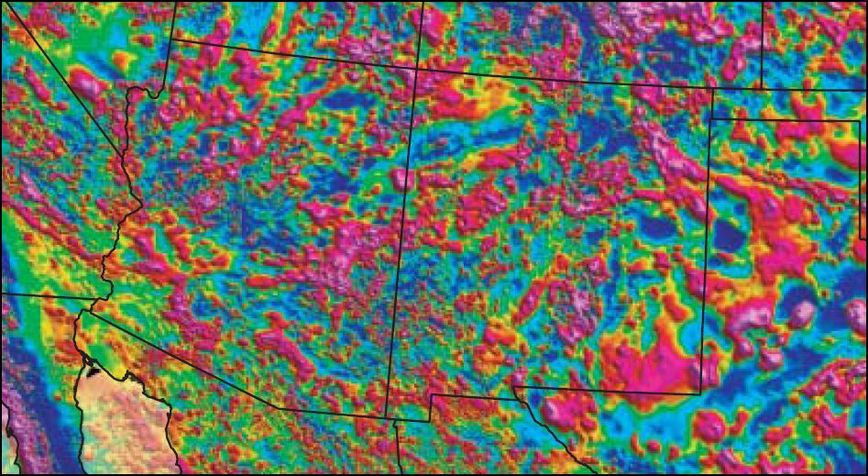SEDONA SCIENCE
Sedona Report - Research Papers 2010 & 2013
Sedona Report - Research Papers 2010 & 2013
| io_and_ben_research.pdf | |
| File Size: | 1024 kb |
| File Type: | |
'Third Eye Mtn,' Sedona: (c)Photo by Liz Alpert
(c)2010-2013, Ben Lonetree & Iona Miller, All Rights Reserved on all graphic and written content.
If you mirror our works, pls include the authors' credit and URL LINK to this page, for reference. Made with 100% recycled electrons.
THE SEDONA EFFECT
Correlations Between Geomagnetic Anomalies, EEG Brainwaves, &
Schumann Resonance in Sedona Vortex Areas
by Iona Miller and Ben Lonetree, (c)2010
http://sedonaomalies.weebly.com
[email protected]
Correlations Between Geomagnetic Anomalies, EEG Brainwaves, &
Schumann Resonance in Sedona Vortex Areas
by Iona Miller and Ben Lonetree, (c)2010
http://sedonaomalies.weebly.com
[email protected]
So can the magnetic component of a Vortex show up on a digital camera? This was taken back in 2000. If you look close there is a distortion in-between where the lines are pointing. It emits from the rock to my right. This could also be just a trick of the lens as cameras back then were not like today. But back then I also had a friend who was one of the creators of the MRI scan. He ran an experiment after I took this picture in his lab and put a black cloth over the lens of his digital camera and took a photo of a very strong magnet. The magnetic flux lines from the magnet showed up in the photo. So, it is possible to capture such waveforms or distortion.
https://www.youtube.com/watch?feature=player_embedded&v=9l6VPpDublg
"All behaviors, including consciousness, are generated by and correlated with brain activity. The activity can be conceived as complex matrices of electromagnetic patterns and their associated chemical changes. Weak intensity complex magnetic fields generated by the earth and by human technology affect consciousness and experience. The critical factor is not the intensity of the fields but their patterns and the information contained within the patterns.
Those patterns that are most similar to the natural temporal configurations of brain activity are most effective."
-- Michael Persinger, Behavioral Neuroscience
Those patterns that are most similar to the natural temporal configurations of brain activity are most effective."
-- Michael Persinger, Behavioral Neuroscience
ABSTRACT: from http://sedonaomalies.weebly.com "The Sedona Effect" by Iona Miller & Ben Lonetree

ABSTRACT: Sedona is the virtual center of Arizona. Many have claimed so, but no one has demonstrated THE SEDONA EFFECT to a scientific standard until now. Proof of Sedona Vortex / Brainwave EEG synchronization can be demonstrated with portable equipment on site in the field, during sudden magnetic events. Previously, we have demonstrated magnetic anomaly charts recorded in both known and unrecognized Vortex activity locations. We have also shown a correlation or amplification of vortex phenomena with Schumann Resonance (2005, Lonetree & Miller). Adding the third measurable parameter of brain wave activity, we demonstrate resonance and amplification among them. We suggest tiny magnetic crystals, biogenic magnetite, makes the human being highly sensitive to ELF field fluctuations. Biological Magnetite could act as a transducer of both low frequency magnetic fields and RF fields.
There may be more than a single electromagnetic coupling mechanism. For example, geomagnetic activity fluctuates most rapidly during upsurge of solar activity which alters brain rhythms and hormonal levels, or the downward part of the cycle, when sunspots are rapidly diminishing. Lonetree's longitudinal EMF studies in several stages over nearly a decade have included phases of monitoring Schumann Resonance (SR), magnetic flux and weather patterns in the test regions of Arizona. He conducted repeatable experiments using a variety of volunteer subjects and weather conditions. Using magnetometers and EEG, he recorded the synchronous signals of geomagnetic anomalies with human brainwaves. Parameters include SR (amplifies effect), brainwave frequency and amplitude, and sudden magnetic events from multiple vortex spots. Evoked potentials include high well-being, healing, nature mystic experiences, ESP or anomalous cognition, and other psychophysical phenomena.
However these sorts of investigation leave unanswered how the brain makes these global excitations into the internal model of reality which we experience subjectively and identify with the real world around us, or indeed how or why subjective consciousness exists in addition to the computational capacity of the brain as a neuro-system. Because no simple chemical (or electromagnetic) explanation seems to have the right existential status to deal with subjective experience, the problem may need to be solved by examining more exotic physics in the brain, such as quantum entanglement, which might lead to new forms of physical interaction which might solve the problem of existential subjectivity. (C. King)
Further studies in magnetoreception may reveal new mechanisms. Questions remain: 1). What is the nature of magnetic sensory cells? 2). By what physical mechanism is the external magnetic field coupled into the organism (reception)?
3). How sensitive is the mechanism to small changes in the magnetic field (detection threshold)? 4). What physical mechanisms or chemical pathways convert the received magnetic energy into a nervous signal (transduction)?
KEYWORDS: geomagnetic activity, geomagnetic pulsations, magnetic anomalies, magnetite, brainwaves, Sedona vortex, Schumann Resonance, healing, ESP, temporal lobe, brainwave resonance, meditation, ESP, brainwave synchronization, biomagnetics, vector equilibrium matrix, tensegrity, magnetotellurics
There may be more than a single electromagnetic coupling mechanism. For example, geomagnetic activity fluctuates most rapidly during upsurge of solar activity which alters brain rhythms and hormonal levels, or the downward part of the cycle, when sunspots are rapidly diminishing. Lonetree's longitudinal EMF studies in several stages over nearly a decade have included phases of monitoring Schumann Resonance (SR), magnetic flux and weather patterns in the test regions of Arizona. He conducted repeatable experiments using a variety of volunteer subjects and weather conditions. Using magnetometers and EEG, he recorded the synchronous signals of geomagnetic anomalies with human brainwaves. Parameters include SR (amplifies effect), brainwave frequency and amplitude, and sudden magnetic events from multiple vortex spots. Evoked potentials include high well-being, healing, nature mystic experiences, ESP or anomalous cognition, and other psychophysical phenomena.
However these sorts of investigation leave unanswered how the brain makes these global excitations into the internal model of reality which we experience subjectively and identify with the real world around us, or indeed how or why subjective consciousness exists in addition to the computational capacity of the brain as a neuro-system. Because no simple chemical (or electromagnetic) explanation seems to have the right existential status to deal with subjective experience, the problem may need to be solved by examining more exotic physics in the brain, such as quantum entanglement, which might lead to new forms of physical interaction which might solve the problem of existential subjectivity. (C. King)
Further studies in magnetoreception may reveal new mechanisms. Questions remain: 1). What is the nature of magnetic sensory cells? 2). By what physical mechanism is the external magnetic field coupled into the organism (reception)?
3). How sensitive is the mechanism to small changes in the magnetic field (detection threshold)? 4). What physical mechanisms or chemical pathways convert the received magnetic energy into a nervous signal (transduction)?
KEYWORDS: geomagnetic activity, geomagnetic pulsations, magnetic anomalies, magnetite, brainwaves, Sedona vortex, Schumann Resonance, healing, ESP, temporal lobe, brainwave resonance, meditation, ESP, brainwave synchronization, biomagnetics, vector equilibrium matrix, tensegrity, magnetotellurics
Proximal Changes in the Geomagnetic Field Intensity
The changes in intensity (in nanoTesla) within the earth’s magnetic field in the three spatial planes
surrounding subject's head were measured. Routine laboratory measurements
have revealed that the semiconductive properties of the human mass can alter the shape and
intensity of the geomagnetic field along the boundaries of the body (Presman 1970).
http://jcer.com/file/JCER_V1%289%29.pdf
The changes in intensity (in nanoTesla) within the earth’s magnetic field in the three spatial planes
surrounding subject's head were measured. Routine laboratory measurements
have revealed that the semiconductive properties of the human mass can alter the shape and
intensity of the geomagnetic field along the boundaries of the body (Presman 1970).
http://jcer.com/file/JCER_V1%289%29.pdf
BACKGROUND:
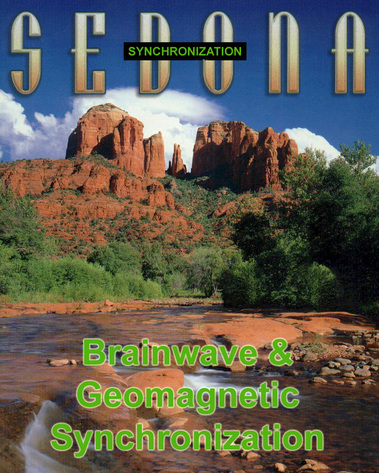
Arguably, proof of Sedona Vortex/Brainwave EEG synchronization can be demonstrated with portable equipment on site in the field, during sudden magnetic events. Previously, we have demonstrated magnetic anomaly charts recorded in both known and unrecognized Vortex activity locations. We have also shown a correlation or amplification of vortex phenomena with Schumann Resonance. (2005, Lonetree & Miller)
Spontaneous Synchronization
Adding the third measurable parameter of brain wave activity demonstrates resonance and amplification among them. Brainwaves are not monitored for subject-induced meditative states, but for direct correlation in shifts with magnetic flux. No active effort is required. The subject remains neutral, relaxed and open but does not try to influence the readings in any way.
Biomagnetic Minerals
We suggest tiny magnetic crystals, biogenic magnetite, makes the human being highly sensitive to ELF field fluctuations. Research has just begun to evaluate the role of magnetite in health and disease. Magnetic mineral crystal, aligned in chains, is embedded in biological membranes. Formation of the chain is under genetic control, but the process that produces magnetite in organisms is still unknown.
Curiously, far more biogenic magnetite is present in animal tissues than is needed for magnetoreception, and the biological function of this extra material is unknown. The presence of ferromagnetic materials in biological systems could provide physical transduction mechanisms for ELF magnetic fields, as well for microwave radiation in the .5 to 10 GHz band where magnetite has its peak ferromagnetic resonance. Magnetite could act as a transducer of both low frequency magnetic fields and RF fields. These models rely on the fact that magnetite will couple strongly to the magnetic fields either through ferromagnetic resonance effects or mechanical effects on membrane ion channels and could disrupt the normal functioning of cells in the brain (Kirschvink).
Ferrimagnetic material is spontaneously magnetized, leaving the magnetic moments of the atoms on different sublattices opposed. The presence of ferrimagnetic material in human brain tissue provides plausible theoretical mechanisms for the interaction of environmental magnetic fields with the human central nervous system. Ferromagnetism is the basic mechanism by which certain materials form permanent magnets or are attracted to magnets. The ferromagnetic transduction model proposed by Kirschvink suggests that the coupling of biogenic magnetite particles in the human brain to mechanosensitive membrane ion gates may provide a mechanism for interactions of artificial and natural environmental magnetic fields with humans.
Magnetite is the most magnetic of all the naturally occurring minerals on Earth. Humans have cuboctahedral chains of magnetite crystals in brain tissue and elsewhere (Fig. 5). Cuboctahedral geometry has specific synergetic properties for transduction. One of the most important shapes in nature, cuboctahedral morphology has the properties of a "jitterbugging" vector equilibrium matrix, the basis of tensegrity (B. Fuller; Ingber). Tensegrity (tensional integrity) applies to basic geometrical biological building blocks. Cuboctahedral ferrite is an equilibrium growth form.
Magnetic Field Sensitivity
Magnetic nanoparticles are embedded in the inner ear (Ho). They may form the basis of an endogenous compass in certain organisms. A geomagnetic field could induce magnetite displacements detectable by the hair cells for purposes of geomagnetic orientation. Kirschvink et al. [ I992] have developed a simple biophysical model for understanding the response of a magnetite-based sensory organelle moving in a viscous fluid which makes quantitative predictions concerning the frequency vs. sensitivity relationships expected for magnetite-based magnetoreceptors. Paramagnetism is a weak magnetic condition of substances that have a positive but small susceptibility to magnetism. The question remains, "can it carry regenerative instructions?"
Spontaneous Synchronization
Adding the third measurable parameter of brain wave activity demonstrates resonance and amplification among them. Brainwaves are not monitored for subject-induced meditative states, but for direct correlation in shifts with magnetic flux. No active effort is required. The subject remains neutral, relaxed and open but does not try to influence the readings in any way.
Biomagnetic Minerals
We suggest tiny magnetic crystals, biogenic magnetite, makes the human being highly sensitive to ELF field fluctuations. Research has just begun to evaluate the role of magnetite in health and disease. Magnetic mineral crystal, aligned in chains, is embedded in biological membranes. Formation of the chain is under genetic control, but the process that produces magnetite in organisms is still unknown.
Curiously, far more biogenic magnetite is present in animal tissues than is needed for magnetoreception, and the biological function of this extra material is unknown. The presence of ferromagnetic materials in biological systems could provide physical transduction mechanisms for ELF magnetic fields, as well for microwave radiation in the .5 to 10 GHz band where magnetite has its peak ferromagnetic resonance. Magnetite could act as a transducer of both low frequency magnetic fields and RF fields. These models rely on the fact that magnetite will couple strongly to the magnetic fields either through ferromagnetic resonance effects or mechanical effects on membrane ion channels and could disrupt the normal functioning of cells in the brain (Kirschvink).
Ferrimagnetic material is spontaneously magnetized, leaving the magnetic moments of the atoms on different sublattices opposed. The presence of ferrimagnetic material in human brain tissue provides plausible theoretical mechanisms for the interaction of environmental magnetic fields with the human central nervous system. Ferromagnetism is the basic mechanism by which certain materials form permanent magnets or are attracted to magnets. The ferromagnetic transduction model proposed by Kirschvink suggests that the coupling of biogenic magnetite particles in the human brain to mechanosensitive membrane ion gates may provide a mechanism for interactions of artificial and natural environmental magnetic fields with humans.
Magnetite is the most magnetic of all the naturally occurring minerals on Earth. Humans have cuboctahedral chains of magnetite crystals in brain tissue and elsewhere (Fig. 5). Cuboctahedral geometry has specific synergetic properties for transduction. One of the most important shapes in nature, cuboctahedral morphology has the properties of a "jitterbugging" vector equilibrium matrix, the basis of tensegrity (B. Fuller; Ingber). Tensegrity (tensional integrity) applies to basic geometrical biological building blocks. Cuboctahedral ferrite is an equilibrium growth form.
Magnetic Field Sensitivity
Magnetic nanoparticles are embedded in the inner ear (Ho). They may form the basis of an endogenous compass in certain organisms. A geomagnetic field could induce magnetite displacements detectable by the hair cells for purposes of geomagnetic orientation. Kirschvink et al. [ I992] have developed a simple biophysical model for understanding the response of a magnetite-based sensory organelle moving in a viscous fluid which makes quantitative predictions concerning the frequency vs. sensitivity relationships expected for magnetite-based magnetoreceptors. Paramagnetism is a weak magnetic condition of substances that have a positive but small susceptibility to magnetism. The question remains, "can it carry regenerative instructions?"
Sedona quartz embedded in ferrous earth
Magnetoreception
Since biogenic magnetite seems to be everywhere in the environment, internally and externally, it may have played a basic role in the initial development of living systems and various sensing mechanisms. Geoelectromagnetic signal information may play a survival role in: navigation, migration/location/orientation, and biological rhythms. There is also anticipation and detection of subtle or catastrophic changes in seasonal variations, weather, hurricane/tornado, and earthquakes. Evidence suggests that biological forms follow the energy patterns laid down by the waveforms of the environment. Electromagnetic vibration can rearrange molecules and macro-molecules into patterned forms (sound, RF, microwave, heat, light, etc.)
Are EMF-induced changes in biological sensitivity and sensory transduction a model for biological detection of EM fields? Kirschvink's calculation shows that magnetosomes moving in response to earth-strength ELF fields are capable of opening trans-membrane ion channels, in a fashion similar to those predicted by ionic resonance models. Therefore, the presence of trace levels of biogenic magnetite in virtually all human tissues examined suggests that similar biophysical processes may explain a variety of weak field ELF bioeffects. There may be more than a single electromagnetic coupling mechanism. For example, geomagnetic activity fluctuates most rapidly during upsurge of solar activity which alters brain rhythms and hormonal levels, or the downward part of the cycle, when sunspots are rapidly diminishing.
Lonetree's longitudinal EMF studies in several stages over nearly a decade have included phases of monitoring Schumann Resonance (SR), magnetic flux and weather patterns in the test regions of Arizona. He conducted repeatable experiments using a variety of volunteer subjects and weather conditions. Using magnetometers and EEG, he recorded the synchronous signals of geomagnetic anomalies with human brainwaves. Parameters include SR (amplifies effect), brainwave frequency and amplitude, and sudden magnetic events from multiple vortex spots. Evoked potentials include high well-being, healing, nature mystic experiences, ESP or anomalous cognition, and other psychophysical phenomena. Fieldtrip Report: http://sedonanomalies.com/brainwave_magnetic_sync.htm
HYPOTHESIS: Further, we hypothesize that some individuals experiencing extraordinary visionary activity in vortex spots may have a low threshold for kindling sub-clinical "temporal lobe transients," (TLTs), micro-seizures which induce a host of psychosensory phenomena. Neural static and discharge are kindled by electrical instabilities in the brain. Typically, such experiences are assigned special personal meaning. According to neuropsychologist Michael Persinger, "God is a result of electro-magnetic stimulation of the temporal lobes .... the God Experience is synthesized during the temporal lobe transients."
Future research could replicate Persinger's lab research in the Sedona field setting, testing induction of TLTs by the application of natural or artificial transcerebral complex magnetic fields. We suggest vortex activity as a precipitating stimuli with testable parameters and variables, including tectonic strain. Persinger argued that strain within the Earth's crust near seismic faults produces intense electromagnetic (EM) fields, creating bodies of light that some interpret as glowing UFOs. The same EM field effects can lead to hallucinations.
Further studies in magnetoreception may reveal new mechanisms. Questions remain: 1). What is the nature of magnetic sensory cells? 2). By what physical mechanism is the external magnetic field coupled into the organism (reception)?
3). How sensitive is the mechanism to small changes in the magnetic field (detection threshold)? 4). What physical mechanisms or chemical pathways convert the received magnetic energy into a nervous signal (transduction)?
J. King describes a more exotic research direction stemming from a startling discovery. Evidence of similar magnetite crystals found in the Martian meteorite ALH84001 suggest the possibility of life on Mars. This identification relied on a comparison of the morphology of the meteoritic magnetite crystals with the magnetosomes from the magnetotactic bacteria, MV-1. Naturally, Mars lost its protective magnetosphere aeons ago when its core cooled and stopped rotating.
from http://sedonaomalies.weebly.com "The Sedona Effect" by Iona Miller & Ben Lonetree
Fig. 1 Example of in/out & spiraling geomagnetism
INTRODUCTION
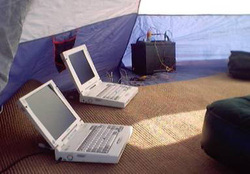
Long hailed by Native Americans as the place where “Mother Earth speaks”, and more recently as home of the “mystical vortex”, Sedona with its redrock temples proves much more than a place of intense beauty. Many books have been written on the special "Vortex" energy field phenomena found in Sedona. Some say it cannot be measured while others claim it is electromagnetic in origin.
After 10 years of research using fluxgate magnetometers and large induction coils, one of the authors (Lonetree) can definitively state that intense electromagnetic activity abounds in Sedona.
Still, analyzing geophysical fields from many factors takes skill in data interpretation of electric (geoelectric horizon), seismic, magnetic and gravitational methods. Characteristic include higher gravitational fields, mozaic positive and negative magnetic fields, and high values of apparent resistivity of rocks. Massive magnetite deposits can produce magnetic fields several times the magnitude of Earth's normal field. The presence of magnetite can give basalt measurable magnetic properties. Remnant magnetic fields are also related to gravity and tectonic structure. Precambrian crystalline rocks and igneous rocks generally contain sufficient magnetic minerals to cause variations in the earth's magnetic field. The predominant magnetic mineral in these rocks is magnetite.
Geochronology: Crustal Evolution
New rock formed from magma records the orientation of Earth's magnetic field at the time the magma cooled. The magnetic Precambrian crystalline basement is the most likely source of the broad magnetic high in the Sedona area. In geology, the term "crystalline basement" defines primordial metamorphic or igneous layers below a sedimentary platform or cover.
The basement was formed underground when archaic crustal rock was changed, by intense heat and pressure. It pre-dates life on earth. Depth to basement is one influence on magnetic anomalies. The lithological composition of the crystalline basement consists mainly of various meta-volcanics which 'froze' then 'folded' paleomagnetic data on wandering pole positions. Sedimentary layers can be rich in iron oxide, compounding magnetic effects. Basaltic lava flows may lack a crystalline structure.
The earth's magnetic field has magnetized certain minerals as the crust formed and morphed through tectonic collisions. The magnetic crystalline basement has differences in relief and magnetization. By taking into consideration the geological and geophysical data, regional magnetic anomalies may be explained by changes in the relief of the homogeneously magnetized crystalline basement and by embedded material.
High density basement
The rocks above the major density contrast are usually younger sediments and/or volcanics, typically having densities ranging from approximately 1.9 g/cm3 to 2.6 g/cm3. Those below the major density contrast are usually older sedimentary, volcanic and/or crystalline rocks, typically having densities ranging from 2.6 g/cm3 to 3.0 g/cm3. High density basement may or may not be equivalent to crystalline and/or magnetic basement.
Magnetic Basement
Magnetic basement is usually equated to crystalline (felsic and mafic) or sometimes, metamorphic basement. It is the unconformity upon which an essentially non-magnetic sedimentary section has been deposited. Large exposures of basement (e.g., the Canadian Shield) show it to be lithologically and magnetically heterogeneous. Very thick sequences of highly magnetic volcanics may sometimes be considered equivalent to a magnetic basement.
Magnetic Sedimentary Section
A surface or zone within the geologic column where magnetic susceptibility contrasts are significant enough to generate magnetic anomalies which could delineate sedimentary geology. Susceptibility variations within the sedimentary column are generally considered near zero except where relatively magnetic sediments (e.g., pyroclastics, arkoses, some shales) are present.
Total Magnetic Intensity Anomaly
The total magnetic intensity anomaly field (TI) is the resultant field after correcting TF, the total magnetic (observed) field for a regional gradient field.
Changes in the local geomagnetic field associated with stress-induced changes in rock susceptibility and remanent magnetization were simulated. Model results show that regions of uplift and subsidence are marked by positive and negative magnetic anomalies respectively, while the amplitudes are controlled by the magnitude of the displacements on the basement fault. (Onyedim)
Tectonic Evolution
Tectonic movements give form to the structure of the sedimentary deposits and to the relief of the crystalline basement's internal structure. This, together with the relief and the depth of occurrence of its surface, is the chief factor influencing the nature of the gravitational and magnetic fields. An inherent characteristic of gravity and magnetic fields means that for any given gravity or magnetic anomaly a range of density or susceptibility distributions can cause the same anomaly.
Problems in translation include the following: (a) The structure of the gravitational field changes substantially, depending of the depth of occurrence, and on the relief of the crystalline basement's surface. (b) If boundaries of the first-order tectonic structures are distinctly expressed in the crystalline basement's relief in a form of faults of considerable amplitude, then their detection in the gravitational field is easy. The task becomes more complicated when the foundation is without gradients and its relief is smooth. (c) In order to determine the relation of the basement's internal structure with its relief and with the structure of the sedimentary deposits, it is necessary to discover the differences in the basement's internal structure within the boundaries of the different first-order tectonic structures. (d) Tracing the disjunctive dislocations in the crystalline basement can be solved by way of geological interpretation of the gravitational and magnetic fields. (Rukhovets, 1967)
Consequently, to compensate for this non-unique characteristic, it is necessary to introduce independent geological and/or geophysical constraints into the interpretations of gravity and magnetic anomalies. The Bouguer gravity field is the gravity anomaly field usually analyzed in gravity interpretations. The gravity anomalies observed in this field are caused by density contrasts within the crust and sub-crust of the Earth. Gravity and Magnetic fields are both potential fields.
Terramagnetics
High density basement may or may not be equivalent to crystalline or magnetic basement. The location within the geologic column of an area where the deepest major susceptibility contrast occurs. In areas where the crystalline basement is magnetic, the magnetic basement is equivalent to crystalline basement. Shallower susceptibility contrasts (such as occur when volcanic or magnetic sediments are in contrast with non-magnetic rocks) may mask or complicate the interpretation of magnetic basement. Susceptibility variations within magnetic basement are common.
In Sedona, latites extruded from volcanic plugs produce intense "circular" magnetic anomalies and magnetic lows, because they are generally reversely polarized. Not visibly crystalline, latites are of volcanic origin composed chiefly of sodic plagioclase and alkali feldspar with subordinate quantities of dark-colored minerals in a finely crystalline to glassy groundmass. Faults and igneous intrusions often produce small local distorting magnetic fields, according to USGS Magnetic Anomaly Survey. Complete Report: http://sedonanomalies.com/usgs_magnetic_anomaly_survey.htm Maghemite forms as nodular growths in laterites and weathers out to form ironstone gravels.
Sedona is rich in paramagnetic Fe2o3, (iron oxide; hematite), the element responsible for the red rocks, soil, and even the red color of the inner bark of trees. Iron oxide has magnetic properties depending on factors including pressure. Iron(III) oxide is the inorganic compound with the formula Fe2O3. It is of one of the three main oxides of iron, the other two being iron(II) oxide(FeO), which is rare, and iron(II,III) oxide (Fe3O4), which also occurs naturally as the mineral magnetite.In addition to iron oxide, the mineral magnetite may also exist in large quantities in Sedona. Concentrations of iron oxide and other metal/minerals have the effect of focusing the earth's natural geomagnetism which is produced by the Earth's molten outer core.
As the outer core churns a magnetic north and south pole are created. During this process another form of magnetism is produced. It is non-dipole in nature. This magnetism has no north or south. It is just pure magnetic energy. Most of this free energy is absorbed by the primary dipole, (north/south) field but a portion of it may reach and penetrate the surface of our planet.
Within the earth non-dipole magnetism assumes the form of a "vortex like" (spiral or circular) shape, that exhibits up and downward motion. Metals and minerals have the tendency to align the earth's natural magnetism, this fact is the basis for many forms of metal/mineral detection systems. The crystalline like structure of the metal/mineral allows the earth's magnetic field to be focused (concentrated) through the metal/mineral deposit. A proton precession magnetometer can be used to detect magnetic fields concentrated in this manner and is standard for metal/mineral exploration applications.
Magnetic activity can be correlated with "vortex energy" but that does not necessarily mean it is the only factor at work. Lonetree has recorded many intense magnetic in and outflows of energy in Sedona and believes this energy is sensed by the magnetite in our inner ear fluid. Unlike the process of hearing which relies on mechanical vibration (the ear drum), to produce electrical impulses to the brain, the magnetite, as a receptor produces the impulses that ultimately stimulate the temporal lobes of the brain. Dr. Michael Persinger's work on temporal lobe stimulation using rotating magnetic fields suggests resultant psychophysical phenomena that correlates closely with anecdotal reports from visitors to vortex sites.
"The brain activity associated with consciousness responds to the subtle changes in geomagnetic activity. These changes include alterations in the occurrence of dreams, enhanced electrical sensitivity of groups of brain cells (and the more extreme form, electrical seizures), and the ability to focus during the day. Because all human beings are immersed within the geomagnetic field we are intrinsically connected to it and to the secondary fields that arise from this connection. Very small changes in the activity of the earth's magnetic field due to alterations in solar activity can affect all human beings. These direct effects are primarily upon the subtle but complex electromagnetic fields that interact with everyone's consciousness due to the marked similarity of the characteristics of our brains and our genetic history. This creates the potential for the function of every person's brain activity to be changed without their awareness." (Persinger)
On the molecular biological level the only significant forces are electromagnetic. Ultimately all living processes must be understood in terms of electromagnetic fields and forces. Every cell in the body a transmitter and receiver of electromagnetic information. Various cells and tissues are conductors (allow for electron flow), insulators (inhibit), semiconductors (electron flow in only one direction), capacitors (accumulate and store charge, later to release) and so on.
Cells transmit and receive energy, and each has its own frequency with which it oscillates. Both electrical and magnetic fields applied to the body create biological changes. We now know that in humans, the sinuses, some other bones in the face and various tissues in the body contain magnetite. Not only is every cell in the body a transmitter and receiver of electromagnetic information, various electromagnetic frequencies precede and correspond to biochemical functions. For example, healthy cells oscillate at higher frequencies that do unhealthy cells, such as cancer cells.
Superparamagnetics
Magnetite is a widespread accessory mineral in rocks and soils. Biogenic magnetite is produced through the reduction of ferric iron within cells. However, the exact process of magnetite synthesis is unknown. Biogenic magnetite was first discovered in humans in 1992. The function of the ferromagnetic material in humans is largely unknown, but the presence of magnetite in human brain tissue provides plausible theoretical mechanisms for the interaction of environmental magnetic fields with the human central nervous system. Ferromagnetic crystals interact more than a million times more strongly with external magnetic fields than do diamagnetic or paramagnetic materials (deoxyhemoglobin, ferritin, and hemosiderin).
Lowenstam (1962) showed magnetite frequently forms by biochemical processes, with varying degrees of control of the organisms over the mineralization process. He distinguishes between biologically induced (BIM) and biologically controlled mineralization(BCM). The former refers to processes with no biological control, and the later to processes with strict metabolic and genetic control. Although ferromagnetic material has been detected in the tissues of a variety of animals that are known or suspected to respond to magnetic fields, in only a few cases has the material been identified and its suitability for use in magnetoreception been determined.
Winklhofer describes two theories: 1). The "radical-pair hypothesis” invokes magnetically sensitive biochemical reactions involving spin-correlated radical pairs such as produced by photoexcitation in the retina. The magnetic field interacting with the radical pair controls the reaction yields and so is transduced into a chemical stimulus. 2). The ”magnetite hypothesis" assumes that the external magnetic field interacts with inclusions of magnetite (Fe3O4) in tissue, which convert the received magnetic energy into a mechanic stimulus (strain) to be detected by adjacent mechanoreceptors, which eventually generate a nervous signal (receptor potential). Thus magnetoreception is connected to chemoreception in the first case and to mechanoreception in the second case.
The two hypotheses are equally plausible at this stage of experimental evidence. Relying on completely different physical principles, the two hypotheses do not mutually exclude each other. On the contrary, there is good experimental
evidence that both types of magnetoreceptor principles may be realized, even in one the same organism, although the primary magnetic information provided by each mechanism appears to be used differently.
Biomineralization
The recent discovery that human tissues also contain trace amounts of magnetite has profound biomedical implications. Magnetite can possibly be absorbed in water and transformed into bodies as the insoluble crystalline chain.. Magnetite is the first truly novel material to be discovered as a biochemical precipitate in human tissues since the dawn of medical science. Everything else in human bones and soft tissue is either diamagnetic or paramagnetic (e.g., Lowenstam & Weiner, 1989).
Magnetite is the only known metallic compound made by living organisms and has the highest electrical conductivity of any cellular material. Although the total amount of magnetite in an adult human is small (a few hundred micrograms), there are several million crystals per gram, each of which interact rather strongly with external magnetic fields (Kirschvink). Analysis suggests molecular magnets, individual crystals of magnetite could contribute enough mechanical energy to activate trans-membrane ion channels.
Bioelectronics
We are electronic organisms, fundamentally electromagnetic, rather than chemical beings (Miller & Miller, 2003c) Beal has linked biogenic magnetite to Electromagnetic Hypersensitivity (EHS). People with EHS experience a variety of symptoms including headache, fatigue, nausea, burning and itchy skin, and muscles aches. These symptoms are subjective and vary between individuals.
Heavy metal toxicity increases the chance of EHS. Life cannot exist without evolution of the environmental energy detection, storage and transmission capabilities of the living cell, which contains a variety of biological liquid crystal (LC) forms. The lipid molecules of all biological membranes exist in various LC states, providing a matrix for information storage and environmental sensing. LCs may provide fundamental support and detection mechanisms for electric and magnetic fields. This includes sound and light, and may explain quantum-level sensitivity in some cases.
from http://sedonaomalies.weebly.com "The Sedona Effect" by Iona Miller & Ben Lonetree
After 10 years of research using fluxgate magnetometers and large induction coils, one of the authors (Lonetree) can definitively state that intense electromagnetic activity abounds in Sedona.
Still, analyzing geophysical fields from many factors takes skill in data interpretation of electric (geoelectric horizon), seismic, magnetic and gravitational methods. Characteristic include higher gravitational fields, mozaic positive and negative magnetic fields, and high values of apparent resistivity of rocks. Massive magnetite deposits can produce magnetic fields several times the magnitude of Earth's normal field. The presence of magnetite can give basalt measurable magnetic properties. Remnant magnetic fields are also related to gravity and tectonic structure. Precambrian crystalline rocks and igneous rocks generally contain sufficient magnetic minerals to cause variations in the earth's magnetic field. The predominant magnetic mineral in these rocks is magnetite.
Geochronology: Crustal Evolution
New rock formed from magma records the orientation of Earth's magnetic field at the time the magma cooled. The magnetic Precambrian crystalline basement is the most likely source of the broad magnetic high in the Sedona area. In geology, the term "crystalline basement" defines primordial metamorphic or igneous layers below a sedimentary platform or cover.
The basement was formed underground when archaic crustal rock was changed, by intense heat and pressure. It pre-dates life on earth. Depth to basement is one influence on magnetic anomalies. The lithological composition of the crystalline basement consists mainly of various meta-volcanics which 'froze' then 'folded' paleomagnetic data on wandering pole positions. Sedimentary layers can be rich in iron oxide, compounding magnetic effects. Basaltic lava flows may lack a crystalline structure.
The earth's magnetic field has magnetized certain minerals as the crust formed and morphed through tectonic collisions. The magnetic crystalline basement has differences in relief and magnetization. By taking into consideration the geological and geophysical data, regional magnetic anomalies may be explained by changes in the relief of the homogeneously magnetized crystalline basement and by embedded material.
High density basement
The rocks above the major density contrast are usually younger sediments and/or volcanics, typically having densities ranging from approximately 1.9 g/cm3 to 2.6 g/cm3. Those below the major density contrast are usually older sedimentary, volcanic and/or crystalline rocks, typically having densities ranging from 2.6 g/cm3 to 3.0 g/cm3. High density basement may or may not be equivalent to crystalline and/or magnetic basement.
Magnetic Basement
Magnetic basement is usually equated to crystalline (felsic and mafic) or sometimes, metamorphic basement. It is the unconformity upon which an essentially non-magnetic sedimentary section has been deposited. Large exposures of basement (e.g., the Canadian Shield) show it to be lithologically and magnetically heterogeneous. Very thick sequences of highly magnetic volcanics may sometimes be considered equivalent to a magnetic basement.
Magnetic Sedimentary Section
A surface or zone within the geologic column where magnetic susceptibility contrasts are significant enough to generate magnetic anomalies which could delineate sedimentary geology. Susceptibility variations within the sedimentary column are generally considered near zero except where relatively magnetic sediments (e.g., pyroclastics, arkoses, some shales) are present.
Total Magnetic Intensity Anomaly
The total magnetic intensity anomaly field (TI) is the resultant field after correcting TF, the total magnetic (observed) field for a regional gradient field.
Changes in the local geomagnetic field associated with stress-induced changes in rock susceptibility and remanent magnetization were simulated. Model results show that regions of uplift and subsidence are marked by positive and negative magnetic anomalies respectively, while the amplitudes are controlled by the magnitude of the displacements on the basement fault. (Onyedim)
Tectonic Evolution
Tectonic movements give form to the structure of the sedimentary deposits and to the relief of the crystalline basement's internal structure. This, together with the relief and the depth of occurrence of its surface, is the chief factor influencing the nature of the gravitational and magnetic fields. An inherent characteristic of gravity and magnetic fields means that for any given gravity or magnetic anomaly a range of density or susceptibility distributions can cause the same anomaly.
Problems in translation include the following: (a) The structure of the gravitational field changes substantially, depending of the depth of occurrence, and on the relief of the crystalline basement's surface. (b) If boundaries of the first-order tectonic structures are distinctly expressed in the crystalline basement's relief in a form of faults of considerable amplitude, then their detection in the gravitational field is easy. The task becomes more complicated when the foundation is without gradients and its relief is smooth. (c) In order to determine the relation of the basement's internal structure with its relief and with the structure of the sedimentary deposits, it is necessary to discover the differences in the basement's internal structure within the boundaries of the different first-order tectonic structures. (d) Tracing the disjunctive dislocations in the crystalline basement can be solved by way of geological interpretation of the gravitational and magnetic fields. (Rukhovets, 1967)
Consequently, to compensate for this non-unique characteristic, it is necessary to introduce independent geological and/or geophysical constraints into the interpretations of gravity and magnetic anomalies. The Bouguer gravity field is the gravity anomaly field usually analyzed in gravity interpretations. The gravity anomalies observed in this field are caused by density contrasts within the crust and sub-crust of the Earth. Gravity and Magnetic fields are both potential fields.
Terramagnetics
High density basement may or may not be equivalent to crystalline or magnetic basement. The location within the geologic column of an area where the deepest major susceptibility contrast occurs. In areas where the crystalline basement is magnetic, the magnetic basement is equivalent to crystalline basement. Shallower susceptibility contrasts (such as occur when volcanic or magnetic sediments are in contrast with non-magnetic rocks) may mask or complicate the interpretation of magnetic basement. Susceptibility variations within magnetic basement are common.
In Sedona, latites extruded from volcanic plugs produce intense "circular" magnetic anomalies and magnetic lows, because they are generally reversely polarized. Not visibly crystalline, latites are of volcanic origin composed chiefly of sodic plagioclase and alkali feldspar with subordinate quantities of dark-colored minerals in a finely crystalline to glassy groundmass. Faults and igneous intrusions often produce small local distorting magnetic fields, according to USGS Magnetic Anomaly Survey. Complete Report: http://sedonanomalies.com/usgs_magnetic_anomaly_survey.htm Maghemite forms as nodular growths in laterites and weathers out to form ironstone gravels.
Sedona is rich in paramagnetic Fe2o3, (iron oxide; hematite), the element responsible for the red rocks, soil, and even the red color of the inner bark of trees. Iron oxide has magnetic properties depending on factors including pressure. Iron(III) oxide is the inorganic compound with the formula Fe2O3. It is of one of the three main oxides of iron, the other two being iron(II) oxide(FeO), which is rare, and iron(II,III) oxide (Fe3O4), which also occurs naturally as the mineral magnetite.In addition to iron oxide, the mineral magnetite may also exist in large quantities in Sedona. Concentrations of iron oxide and other metal/minerals have the effect of focusing the earth's natural geomagnetism which is produced by the Earth's molten outer core.
As the outer core churns a magnetic north and south pole are created. During this process another form of magnetism is produced. It is non-dipole in nature. This magnetism has no north or south. It is just pure magnetic energy. Most of this free energy is absorbed by the primary dipole, (north/south) field but a portion of it may reach and penetrate the surface of our planet.
Within the earth non-dipole magnetism assumes the form of a "vortex like" (spiral or circular) shape, that exhibits up and downward motion. Metals and minerals have the tendency to align the earth's natural magnetism, this fact is the basis for many forms of metal/mineral detection systems. The crystalline like structure of the metal/mineral allows the earth's magnetic field to be focused (concentrated) through the metal/mineral deposit. A proton precession magnetometer can be used to detect magnetic fields concentrated in this manner and is standard for metal/mineral exploration applications.
Magnetic activity can be correlated with "vortex energy" but that does not necessarily mean it is the only factor at work. Lonetree has recorded many intense magnetic in and outflows of energy in Sedona and believes this energy is sensed by the magnetite in our inner ear fluid. Unlike the process of hearing which relies on mechanical vibration (the ear drum), to produce electrical impulses to the brain, the magnetite, as a receptor produces the impulses that ultimately stimulate the temporal lobes of the brain. Dr. Michael Persinger's work on temporal lobe stimulation using rotating magnetic fields suggests resultant psychophysical phenomena that correlates closely with anecdotal reports from visitors to vortex sites.
"The brain activity associated with consciousness responds to the subtle changes in geomagnetic activity. These changes include alterations in the occurrence of dreams, enhanced electrical sensitivity of groups of brain cells (and the more extreme form, electrical seizures), and the ability to focus during the day. Because all human beings are immersed within the geomagnetic field we are intrinsically connected to it and to the secondary fields that arise from this connection. Very small changes in the activity of the earth's magnetic field due to alterations in solar activity can affect all human beings. These direct effects are primarily upon the subtle but complex electromagnetic fields that interact with everyone's consciousness due to the marked similarity of the characteristics of our brains and our genetic history. This creates the potential for the function of every person's brain activity to be changed without their awareness." (Persinger)
On the molecular biological level the only significant forces are electromagnetic. Ultimately all living processes must be understood in terms of electromagnetic fields and forces. Every cell in the body a transmitter and receiver of electromagnetic information. Various cells and tissues are conductors (allow for electron flow), insulators (inhibit), semiconductors (electron flow in only one direction), capacitors (accumulate and store charge, later to release) and so on.
Cells transmit and receive energy, and each has its own frequency with which it oscillates. Both electrical and magnetic fields applied to the body create biological changes. We now know that in humans, the sinuses, some other bones in the face and various tissues in the body contain magnetite. Not only is every cell in the body a transmitter and receiver of electromagnetic information, various electromagnetic frequencies precede and correspond to biochemical functions. For example, healthy cells oscillate at higher frequencies that do unhealthy cells, such as cancer cells.
Superparamagnetics
Magnetite is a widespread accessory mineral in rocks and soils. Biogenic magnetite is produced through the reduction of ferric iron within cells. However, the exact process of magnetite synthesis is unknown. Biogenic magnetite was first discovered in humans in 1992. The function of the ferromagnetic material in humans is largely unknown, but the presence of magnetite in human brain tissue provides plausible theoretical mechanisms for the interaction of environmental magnetic fields with the human central nervous system. Ferromagnetic crystals interact more than a million times more strongly with external magnetic fields than do diamagnetic or paramagnetic materials (deoxyhemoglobin, ferritin, and hemosiderin).
Lowenstam (1962) showed magnetite frequently forms by biochemical processes, with varying degrees of control of the organisms over the mineralization process. He distinguishes between biologically induced (BIM) and biologically controlled mineralization(BCM). The former refers to processes with no biological control, and the later to processes with strict metabolic and genetic control. Although ferromagnetic material has been detected in the tissues of a variety of animals that are known or suspected to respond to magnetic fields, in only a few cases has the material been identified and its suitability for use in magnetoreception been determined.
Winklhofer describes two theories: 1). The "radical-pair hypothesis” invokes magnetically sensitive biochemical reactions involving spin-correlated radical pairs such as produced by photoexcitation in the retina. The magnetic field interacting with the radical pair controls the reaction yields and so is transduced into a chemical stimulus. 2). The ”magnetite hypothesis" assumes that the external magnetic field interacts with inclusions of magnetite (Fe3O4) in tissue, which convert the received magnetic energy into a mechanic stimulus (strain) to be detected by adjacent mechanoreceptors, which eventually generate a nervous signal (receptor potential). Thus magnetoreception is connected to chemoreception in the first case and to mechanoreception in the second case.
The two hypotheses are equally plausible at this stage of experimental evidence. Relying on completely different physical principles, the two hypotheses do not mutually exclude each other. On the contrary, there is good experimental
evidence that both types of magnetoreceptor principles may be realized, even in one the same organism, although the primary magnetic information provided by each mechanism appears to be used differently.
Biomineralization
The recent discovery that human tissues also contain trace amounts of magnetite has profound biomedical implications. Magnetite can possibly be absorbed in water and transformed into bodies as the insoluble crystalline chain.. Magnetite is the first truly novel material to be discovered as a biochemical precipitate in human tissues since the dawn of medical science. Everything else in human bones and soft tissue is either diamagnetic or paramagnetic (e.g., Lowenstam & Weiner, 1989).
Magnetite is the only known metallic compound made by living organisms and has the highest electrical conductivity of any cellular material. Although the total amount of magnetite in an adult human is small (a few hundred micrograms), there are several million crystals per gram, each of which interact rather strongly with external magnetic fields (Kirschvink). Analysis suggests molecular magnets, individual crystals of magnetite could contribute enough mechanical energy to activate trans-membrane ion channels.
Bioelectronics
We are electronic organisms, fundamentally electromagnetic, rather than chemical beings (Miller & Miller, 2003c) Beal has linked biogenic magnetite to Electromagnetic Hypersensitivity (EHS). People with EHS experience a variety of symptoms including headache, fatigue, nausea, burning and itchy skin, and muscles aches. These symptoms are subjective and vary between individuals.
Heavy metal toxicity increases the chance of EHS. Life cannot exist without evolution of the environmental energy detection, storage and transmission capabilities of the living cell, which contains a variety of biological liquid crystal (LC) forms. The lipid molecules of all biological membranes exist in various LC states, providing a matrix for information storage and environmental sensing. LCs may provide fundamental support and detection mechanisms for electric and magnetic fields. This includes sound and light, and may explain quantum-level sensitivity in some cases.
from http://sedonaomalies.weebly.com "The Sedona Effect" by Iona Miller & Ben Lonetree
Fig. 2 - Holographic characteristics of magnetite
Microscopic Magnets
Kirschvink suggests Liquid Crystal (LC) properties in living systems may provide the basic support for several of the background mechanisms proposed to explain the biosystem effects of natural and artificial EMFs. In this case the LCs in their various biosystem forms may react to amplify unusual internal or external energy inputs, transmitting their sensing reactions to stimulate other systems, e.g., immune system response, melatonin production, various symptoms, etc.
Magnetite is a common industrial pollutant and can often find its way onto the external body surface or into the gut of higher animals (Kirschvink, 1983). Biogenic magnetite has a potentially toxic downside both within the human system and in its interaction with artificial electromagnetic fields. It has been suggested that biogenic magnetite, which has been detected in the brain and may be related to neurodegenerative diseases such as Alzheimer's and Parkinson's diseases, could initially form in ferritin. Of even wider interest, nanoscale biogenic magnetite-based ferromagnetic tranduction may also be a transduction mechanism for mobile phone bioeffects including increased cell mortality (Cranfield). These models are based on the coupling of radiofrequency and pulsed electromagnetic emissions to biogenic magnetite (Fe3O4) present in the human brain via either ferromagnetic resonance or mechanical activation of cellular ion channels (Kirschvink).
Molecular Magnets
Because ferritin is present in the brain, the ferrihydrite core could be a precursor for biogenic magnetite formation--particularly in cases where the normal functioning of the ferritin protein is disrupted. It has recently been proposed that some of the excess iron in neurodegenerative tissue may be in the form of the magnetic iron oxide magnetite (Fe3O4). (SQUID) magnetometry has shown concentrations of magnetite are found to be significantly higher in three samples of Alzheimer's disease tissue than in controls (Hautot).
Biogenic magnetite is found primarily in the brain and highly enervated ethmoid sinus area in humans. It is also found in specific brain areas of insects, fish, birds and mammals, and more concentrated in the brains of migratory creatures, which rely on cues from geomagnetic variations and patterns. This biomagnetite is most likely concentrated in a differentiated cell type (a magnetocyte), which might contain thousands of magnetosomes (individual crystals of single-domain molecular size). In the almost quantum-energy detection level of biological sensors to EMFs, the LCs in these areas may play an important part in detecting and amplifying the effects of EMFs on the magnetosomes -- perhaps providing fixed storage of environmental geo-electromagnetic patterns for migration/navagation purposes.
Dr. Kirschvink states: The discovery of biogenic magnetite (Fe3O4) in a variety of human tissues suggests that it may be responsible for some of the reported effects of weak, ELF magnetic fields. A previous analysis suggests that individual crystals of magnetite of single domain size could contribute enough mechanical energy to activate trans-membrane ion channels. Detailed analysis of the magnetic property data from human tissues (normal and pathological) indicate the presence of substantial magnetic intergrain interaction effects. This implies that biological averaging of ELF EMF effects at the cell membrane is a possibility.
Since biogenic magnetite seems to be ubiquitous in the environment, it may have played a basic role in the initial development of living systems and various sensing mechanisms. There is much evidence that biological forms follow the energy patterns laid down by the waveforms of the environment. Electromagnetic vibration can rearrange molecules and macro-molecules into patterned forms (sound, RF, microwave, heat, light, etc.) Lissajou or Chladni figures produced in liquid and solids appear as structural biological patterns in simple organisms.
from http://sedonaomalies.weebly.com "The Sedona Effect" by Iona Miller & Ben Lonetree
Kirschvink suggests Liquid Crystal (LC) properties in living systems may provide the basic support for several of the background mechanisms proposed to explain the biosystem effects of natural and artificial EMFs. In this case the LCs in their various biosystem forms may react to amplify unusual internal or external energy inputs, transmitting their sensing reactions to stimulate other systems, e.g., immune system response, melatonin production, various symptoms, etc.
Magnetite is a common industrial pollutant and can often find its way onto the external body surface or into the gut of higher animals (Kirschvink, 1983). Biogenic magnetite has a potentially toxic downside both within the human system and in its interaction with artificial electromagnetic fields. It has been suggested that biogenic magnetite, which has been detected in the brain and may be related to neurodegenerative diseases such as Alzheimer's and Parkinson's diseases, could initially form in ferritin. Of even wider interest, nanoscale biogenic magnetite-based ferromagnetic tranduction may also be a transduction mechanism for mobile phone bioeffects including increased cell mortality (Cranfield). These models are based on the coupling of radiofrequency and pulsed electromagnetic emissions to biogenic magnetite (Fe3O4) present in the human brain via either ferromagnetic resonance or mechanical activation of cellular ion channels (Kirschvink).
Molecular Magnets
Because ferritin is present in the brain, the ferrihydrite core could be a precursor for biogenic magnetite formation--particularly in cases where the normal functioning of the ferritin protein is disrupted. It has recently been proposed that some of the excess iron in neurodegenerative tissue may be in the form of the magnetic iron oxide magnetite (Fe3O4). (SQUID) magnetometry has shown concentrations of magnetite are found to be significantly higher in three samples of Alzheimer's disease tissue than in controls (Hautot).
Biogenic magnetite is found primarily in the brain and highly enervated ethmoid sinus area in humans. It is also found in specific brain areas of insects, fish, birds and mammals, and more concentrated in the brains of migratory creatures, which rely on cues from geomagnetic variations and patterns. This biomagnetite is most likely concentrated in a differentiated cell type (a magnetocyte), which might contain thousands of magnetosomes (individual crystals of single-domain molecular size). In the almost quantum-energy detection level of biological sensors to EMFs, the LCs in these areas may play an important part in detecting and amplifying the effects of EMFs on the magnetosomes -- perhaps providing fixed storage of environmental geo-electromagnetic patterns for migration/navagation purposes.
Dr. Kirschvink states: The discovery of biogenic magnetite (Fe3O4) in a variety of human tissues suggests that it may be responsible for some of the reported effects of weak, ELF magnetic fields. A previous analysis suggests that individual crystals of magnetite of single domain size could contribute enough mechanical energy to activate trans-membrane ion channels. Detailed analysis of the magnetic property data from human tissues (normal and pathological) indicate the presence of substantial magnetic intergrain interaction effects. This implies that biological averaging of ELF EMF effects at the cell membrane is a possibility.
Since biogenic magnetite seems to be ubiquitous in the environment, it may have played a basic role in the initial development of living systems and various sensing mechanisms. There is much evidence that biological forms follow the energy patterns laid down by the waveforms of the environment. Electromagnetic vibration can rearrange molecules and macro-molecules into patterned forms (sound, RF, microwave, heat, light, etc.) Lissajou or Chladni figures produced in liquid and solids appear as structural biological patterns in simple organisms.
from http://sedonaomalies.weebly.com "The Sedona Effect" by Iona Miller & Ben Lonetree
Fig. 3 - 12/10/10 SR Reading; Red line at 60Hz = the US power grid.
50Hz is the European grid propagating all the way to Arizona.
Normal seasonal readings show SR is not rising or unordinary in any way.
50Hz is the European grid propagating all the way to Arizona.
Normal seasonal readings show SR is not rising or unordinary in any way.
MATERIALS & METHODS
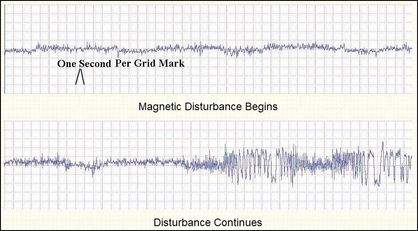
Fig. 4 Magnetic Disturbance Strip Charts, Sedona, 2010
Instrumentation consists of 1) a Schumann Resonance Antenna, 2) EEG Brainwave interface, and 3) Fluxgate magnetometer.
1). Schumann Antenna
http://sedonanomalies.com/NASA-2003-tm212647.pdf
Lonetree's method for monitoring Schumann Resonance is a primary citation by NASA in the 2003 report, "Investigations of Relatively Easy to Construct Antennas with Efficiency in Receiving Schumann Resonances." Possible applications of these antennas are global weather prediction, earthquake prediction, planetary exploration, communication, wireless transmission of power, or even a “free” energy source.
The rhythm of life has evolved at an even tempo for epochs. We live in a complex matrix of oscillating fields; the tiniest fluctuations in one interlocked field carry over perturbations into others. Many times per second, pulses travel completely around the world between our planet's surface and the ionosphere sending coordinating signals to all organisms. These signals couple us to the global electrostatic field. Named for their discoverer, the Schumann Resonance (SR) provides an orchestrating pulse for life on our planet. We all march to the cadence of this cosmic drummer -- our planetary heartbeat, which sets the tempo for health and well-being.
The range of SR frequencies are related mathematically, but are not true harmonics. Perhaps it is closer to think of SR as the “Voice of the Planet,” rather than its heartbeat, which is around the 10Hz. Cycle (Lonetree). There is a harmonic relationship between the earth and our bioelectronic mind/bodies. Earth's low frequency isoelectric field, the magnetic field of the earth, and the electrostatic field that emerges from our bodies are closely interwoven. Our internal rhythms interact with external rhythms, affecting our balance, REM patterns, health, and mental focus.
SR waves probably help regulate our bodies' internal clocks, affecting sleep/dream patterns, arousal patterns, and hormonal secretion. The rhythms and pulsations of the human brain mirror those of the resonant properties of the terrestrial cavity, which functions as a waveguide. This natural frequency pulsation is not a fixed number, but an average of global readings, much like EEG is an average of brainwave readings. SR actually fluctuates, like brainwaves, due to geographical location, lightning, solar flares, atmospheric ionization and daily cycles. Contrary to the New Age meme, SR is definitely not rising, according to Lonetree's continuous monitoring.
Schumann resonances (SR) are the Earth’s natural vibrations (Fig. 3). Generated by lightning, they form within the cavity between the Earth and the ionosphere. These resonances are quasi-standing electromagnetic waves that propagate approximately at 7.8 cycles per second (7.8 Hz). These waves have modes that resonate at approximately 14, 21, 26, 33, 39, and 45 Hz, with a daily variation of about ±0.5 Hz. Even though the global Earth-ionosphere system behaves as a spherical-shell-cavity resonator (waveguide), the 7.8-Hz frequency can easily be approximated by using the Earth’s circumference.
The circumference of the Earth is about 25,000 miles (40 000 km), and the speed of light is about 3 × 108 m/s. It would therefore take light approximately 0.133 second to travel the Earth, which roughly yields 7.5 Hz. This frequency is not 7.8 Hz, even though the circumference of the Earth and the speed of light are constants. This resonance changes because of changes in the Earth’s electrical and magnetic activity in the atmosphere and also because of changes in the height of the ionosphere; 7.8 Hz is the average peak frequency over a long period of time. It correlates with human alpha - theta brainwave frequency.
2). EEG: Neurosky Brainwave Interface
http://www.neurosky.com/
http://www.neurosky.com/mindset/visualizer.html
The NeuroSky MindSet headset is a brainwave interface with medical-grade data acquisition for research or consumer use. It measures electrical impulses generated by mental activity, and uses proprietary algorithms to calculate the observed types of brain behavior. For consumer games and education, The MindSet makes calculated brainwave levels and interpreted mental states (currently 'attention' and 'meditation') available as digital input for computers, phones, software, and devices. In all cases, the data is fed to the computer via wireless Bluetooth and includes both audio and voice support for MP3 and VoIP.
Traditional brainwave feedback and recording devices require gels and numerous sensor points placed on the subject's head. MindSet uses only a single dry (no gel) sensor that rests comfortably on the subject's forehead and connects to a PC for data collection. Variable headset sizing ensures flexibility regardless of the subjects' head size. 5-second calibration reduces downtime. All features make it a viable choice for field experiments.
In Alpha, we begin to access the wealth of creativity that lies just below our conscious awareness - it is the gateway, the entry point that leads into deeper states of consciousness. Alpha waves aid relaxation and overall mental coordination, calmness, alertness, inner awareness, mind/body integration and learning. Theta waves mean 'slow" activity often connected with creativity, intuition, daydreaming or recalling emotions and sensations. Focus is internal in this state between waking and sleep. Theta meditation increases creativity, enhances learning, reduces stress and awakens intuition and other extrasensory perception skills. Our experimental goal in Sedona isn't to teach or augment meditation, but just to monitor imposed changes on those simply relaxing at the geomagnetic sites.
3). Fluxgate Magnetometer:
http://www.watson-gyro.com/products/fluxgate_magnetometer_index.html
A fluxgate magnetometer consists of a small, magnetically susceptible, core wrapped by two coils of wire. An alternating electrical current is passed through one coil, driving the core through an alternating cycle of magnetic saturation; i.e., magnetized, unmagnetized, inversely magnetized, unmagnetized, magnetized, etc. This constantly changing field induces an electrical current in the second coil, and this output current is measured by a detector. In a magnetically neutral background, the input and output currents will match. However, when the core is exposed to a background field, it will be more easily saturated in alignment with that field and less easily saturated in opposition to it. Hence the alternating magnetic field, and the induced output current, will be out of step with the input current. The extent to which this is the case will depend on the strength of the background magnetic field. Often, the current in the output coil is integrated, yielding an output analog voltage, proportional to the magnetic field.
A wide variety of sensors are currently available and used to measure magnetic fields. Fluxgate magnetometers and gradiometers measure the direction and magnitude of magnetic fields. Fluxgates are affordable, rugged and compact. This, plus their typically low power consumption makes them ideal for a variety of sensing applications.
The typical fluxgate magnetometer consists of a "sense" (secondary) coil surrounding an inner "drive" (primary) coil that is wound around permeable core material. Each sensor has magnetic core elements that can be viewed as two carefully matched halves. An alternating current is applied to the drive winding, which drives the core into plus and minus saturation. The instantaneous drive current in each core half is driven in opposite polarity with respect to any external magnetic field. In the absence of any external magnetic field, the flux in one core half cancels that in the other and the total flux seen by the sense coil is zero. If an external magnetic field is now applied, it will, at a given instance in time, aid the flux in one core half and oppose flux in the other. This causes a net flux imbalance between the halves, so that they no longer cancel one another. Current pulses are now induced in the sense winding on every drive current phase reversal (or at the 2nd, and all even harmonics). This results in a signal that is dependent on both the external field magnitude and polarity.
from http://sedonaomalies.weebly.com "The Sedona Effect" by Iona Miller & Ben Lonetree
Instrumentation consists of 1) a Schumann Resonance Antenna, 2) EEG Brainwave interface, and 3) Fluxgate magnetometer.
1). Schumann Antenna
http://sedonanomalies.com/NASA-2003-tm212647.pdf
Lonetree's method for monitoring Schumann Resonance is a primary citation by NASA in the 2003 report, "Investigations of Relatively Easy to Construct Antennas with Efficiency in Receiving Schumann Resonances." Possible applications of these antennas are global weather prediction, earthquake prediction, planetary exploration, communication, wireless transmission of power, or even a “free” energy source.
The rhythm of life has evolved at an even tempo for epochs. We live in a complex matrix of oscillating fields; the tiniest fluctuations in one interlocked field carry over perturbations into others. Many times per second, pulses travel completely around the world between our planet's surface and the ionosphere sending coordinating signals to all organisms. These signals couple us to the global electrostatic field. Named for their discoverer, the Schumann Resonance (SR) provides an orchestrating pulse for life on our planet. We all march to the cadence of this cosmic drummer -- our planetary heartbeat, which sets the tempo for health and well-being.
The range of SR frequencies are related mathematically, but are not true harmonics. Perhaps it is closer to think of SR as the “Voice of the Planet,” rather than its heartbeat, which is around the 10Hz. Cycle (Lonetree). There is a harmonic relationship between the earth and our bioelectronic mind/bodies. Earth's low frequency isoelectric field, the magnetic field of the earth, and the electrostatic field that emerges from our bodies are closely interwoven. Our internal rhythms interact with external rhythms, affecting our balance, REM patterns, health, and mental focus.
SR waves probably help regulate our bodies' internal clocks, affecting sleep/dream patterns, arousal patterns, and hormonal secretion. The rhythms and pulsations of the human brain mirror those of the resonant properties of the terrestrial cavity, which functions as a waveguide. This natural frequency pulsation is not a fixed number, but an average of global readings, much like EEG is an average of brainwave readings. SR actually fluctuates, like brainwaves, due to geographical location, lightning, solar flares, atmospheric ionization and daily cycles. Contrary to the New Age meme, SR is definitely not rising, according to Lonetree's continuous monitoring.
Schumann resonances (SR) are the Earth’s natural vibrations (Fig. 3). Generated by lightning, they form within the cavity between the Earth and the ionosphere. These resonances are quasi-standing electromagnetic waves that propagate approximately at 7.8 cycles per second (7.8 Hz). These waves have modes that resonate at approximately 14, 21, 26, 33, 39, and 45 Hz, with a daily variation of about ±0.5 Hz. Even though the global Earth-ionosphere system behaves as a spherical-shell-cavity resonator (waveguide), the 7.8-Hz frequency can easily be approximated by using the Earth’s circumference.
The circumference of the Earth is about 25,000 miles (40 000 km), and the speed of light is about 3 × 108 m/s. It would therefore take light approximately 0.133 second to travel the Earth, which roughly yields 7.5 Hz. This frequency is not 7.8 Hz, even though the circumference of the Earth and the speed of light are constants. This resonance changes because of changes in the Earth’s electrical and magnetic activity in the atmosphere and also because of changes in the height of the ionosphere; 7.8 Hz is the average peak frequency over a long period of time. It correlates with human alpha - theta brainwave frequency.
2). EEG: Neurosky Brainwave Interface
http://www.neurosky.com/
http://www.neurosky.com/mindset/visualizer.html
The NeuroSky MindSet headset is a brainwave interface with medical-grade data acquisition for research or consumer use. It measures electrical impulses generated by mental activity, and uses proprietary algorithms to calculate the observed types of brain behavior. For consumer games and education, The MindSet makes calculated brainwave levels and interpreted mental states (currently 'attention' and 'meditation') available as digital input for computers, phones, software, and devices. In all cases, the data is fed to the computer via wireless Bluetooth and includes both audio and voice support for MP3 and VoIP.
Traditional brainwave feedback and recording devices require gels and numerous sensor points placed on the subject's head. MindSet uses only a single dry (no gel) sensor that rests comfortably on the subject's forehead and connects to a PC for data collection. Variable headset sizing ensures flexibility regardless of the subjects' head size. 5-second calibration reduces downtime. All features make it a viable choice for field experiments.
In Alpha, we begin to access the wealth of creativity that lies just below our conscious awareness - it is the gateway, the entry point that leads into deeper states of consciousness. Alpha waves aid relaxation and overall mental coordination, calmness, alertness, inner awareness, mind/body integration and learning. Theta waves mean 'slow" activity often connected with creativity, intuition, daydreaming or recalling emotions and sensations. Focus is internal in this state between waking and sleep. Theta meditation increases creativity, enhances learning, reduces stress and awakens intuition and other extrasensory perception skills. Our experimental goal in Sedona isn't to teach or augment meditation, but just to monitor imposed changes on those simply relaxing at the geomagnetic sites.
3). Fluxgate Magnetometer:
http://www.watson-gyro.com/products/fluxgate_magnetometer_index.html
A fluxgate magnetometer consists of a small, magnetically susceptible, core wrapped by two coils of wire. An alternating electrical current is passed through one coil, driving the core through an alternating cycle of magnetic saturation; i.e., magnetized, unmagnetized, inversely magnetized, unmagnetized, magnetized, etc. This constantly changing field induces an electrical current in the second coil, and this output current is measured by a detector. In a magnetically neutral background, the input and output currents will match. However, when the core is exposed to a background field, it will be more easily saturated in alignment with that field and less easily saturated in opposition to it. Hence the alternating magnetic field, and the induced output current, will be out of step with the input current. The extent to which this is the case will depend on the strength of the background magnetic field. Often, the current in the output coil is integrated, yielding an output analog voltage, proportional to the magnetic field.
A wide variety of sensors are currently available and used to measure magnetic fields. Fluxgate magnetometers and gradiometers measure the direction and magnitude of magnetic fields. Fluxgates are affordable, rugged and compact. This, plus their typically low power consumption makes them ideal for a variety of sensing applications.
The typical fluxgate magnetometer consists of a "sense" (secondary) coil surrounding an inner "drive" (primary) coil that is wound around permeable core material. Each sensor has magnetic core elements that can be viewed as two carefully matched halves. An alternating current is applied to the drive winding, which drives the core into plus and minus saturation. The instantaneous drive current in each core half is driven in opposite polarity with respect to any external magnetic field. In the absence of any external magnetic field, the flux in one core half cancels that in the other and the total flux seen by the sense coil is zero. If an external magnetic field is now applied, it will, at a given instance in time, aid the flux in one core half and oppose flux in the other. This causes a net flux imbalance between the halves, so that they no longer cancel one another. Current pulses are now induced in the sense winding on every drive current phase reversal (or at the 2nd, and all even harmonics). This results in a signal that is dependent on both the external field magnitude and polarity.
from http://sedonaomalies.weebly.com "The Sedona Effect" by Iona Miller & Ben Lonetree
Fig. 5 - Fluxgate Schematic
RESULTS
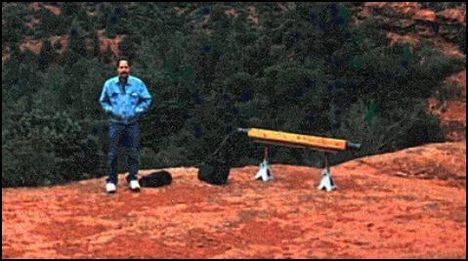
STAGE 1 of this SEDONA EFFECT Experiment centered on natural effects, how geomagnetism affects SR in a given local geographical area. Lonetree noticed the anomaly that atmospherics were noticeably stronger (louder) at certain locations along the trail. This was not always the case, though. He began to wonder if the increase in the strength of the atmospherics had anything to do with the infamous vortex energy. The VLF receiver attributed the increase in strength to amplification of the atmospherics. This theory could not be correct though, for if it were, atmospheric strength would be enhanced all the time when he recorded at this particular spot. Such was not the case.
STAGE 2: Surveys conducted by the USGS (United States Geological Survey) indicated there were locations on this planet where there exist vortex-like acting inflows and outflows of non-polarized magnetic energy. Non-polarized means no North or South pole as in a regular magnet. The out- or inflow is simply pure magnetic energy in dynamic motion. In order to prove his theory, Lonetree used a fluxgate sensor. This particular instrument is used for monitoring the Earth’s magnetic field as well as any other source of magnetism.
STAGE 3: The first Schumann Resonance (SR) occurs at average frequency of 7.83 Hz. This frequency also happens to fall between two of the human brainwaves, Alpha and Theta. There are four altogether: Alpha, Beta, Delta, and Theta. When our brain is functioning restfully in the predominantly alpha/theta zone, we become more relaxed or peaceful. The human brain acts like an electrical circuit called a phase-lock loop. A local external (outside the body) electromagnetic signal, as long as it is stronger than our brainwaves, initiates a resonance effect where the brain locks onto and resonates at that frequency.
Lonetree conjectured that if the first Schumann Resonance were in some way enhanced in the area where a large geomagnetic outflow occurred, it should be possible for the first Schumann Resonance to affect a person’s brainwave activity. Since that first signal again lies in alpha and theta range, simultaneously observing and recording the first resonance along with local field geomagnetic activity using the fluxgate instrument in vortex sites proves this theory. What others have long conjectured, Lonetree was able to demonstrate synchrony, conclusively.
He also recorded what he believed to be influencing magnetic energy. He saw the first Schumann Resonance increase in strength while the geomagnetic outflow of energy increased simultaneously. SR and ELF EM fields do have a provable influence on living organisms. SR changes over correlated circadian rhythms and other cycles of time. Physiological effects have been observed in a human subject in response to stimulation of the skin with weak electromagnetic fields that are pulsed with certain frequencies to excite a sensory resonance. Pulsed electromagnetic fields are capable of exciting sensory resonances in nearby subjects.
In "Schumann Resonances, a plausible biophysical mechanism for the human health effects of Solar/Geomagnetic Activity" we read, "König, a student of Dr Schumann, took readings of the SR signal. He observed the close similarity of the SR signal with the EEG alpha rhythm, both of which dominate the daytime, and the local sferics 3 Hz signal with the EEG delta rhythm, that dominate the night, König (1974a). The close similarity, including the diurnal pattern and extensive laboratory experiments, prompted König to postulate that the ELF brain waves had evolved to use these natural signals, König (1974a). König also found that a superimposed epoch analysis related to the arrival of 3Hz. signals from locally generated thunderstorms showed significantly slowed reaction times. This was tested and confirmed in a series of laboratory experiments using human volunteers. König found that with a range of field strengths, 1 to 5V/m, the "3Hz" signal consistently slowed people's reactions and a "10Hz" signal consistently accelerated people's reaction times. Reactions were also correlated with the more objective test for galvanic skin response (GSR), using a 5 V/m 3Hz signal, König (1974b)."
STAGE 4: There are some indications that a correlation exists between atmospheric oscillations, brain waves, and biological EM emissions. Understanding the nature of this correlation may enable us to characterize and further utilize various types of "healing energies". Integral portions of biological systems have been shown to be semiconducting, ferromagnetic and piezoelectric. The biosemiconductor, together with the drift of charges, ions, and radicals, may be considered as a form of "bioplasma". Bioplasma may be subject to magnetohydrodynamic (MHD) control (Roffey).
The EM fields emitted by trained healers may be considered as coherent, resonant biomagnetic emissions by which a less coherent EM field of the patient is "tuned" to the specific frequency and phase, and through which homeostasis can be "aligned" to induce "healing" (Roffey). Vortex energy may exert a so-called "healing" energy in much the same way, via subtle resonance effects.
Both Persinger and Ryan separately conducted research that shows apparent associations between extrasensory perception (ESP), geomagnetic activity (GMA) and local sidereal time (LST; a time system based on the rotation of the Earth with respect to star positions). Persinger also links certain ESP phenomena to tectonic strain. The analysis of geomagnetic pulsation activity in relation to ESP success was initially conceived as a first step in a process of elimination in the search for an explanation for the reported associations between GMA and LST with ESP. Rather than eliminating the possibility, this factor emerges as a leading candidate for a solution to the problem.
from http://sedonaomalies.weebly.com "The Sedona Effect" by Iona Miller & Ben Lonetree
STAGE 2: Surveys conducted by the USGS (United States Geological Survey) indicated there were locations on this planet where there exist vortex-like acting inflows and outflows of non-polarized magnetic energy. Non-polarized means no North or South pole as in a regular magnet. The out- or inflow is simply pure magnetic energy in dynamic motion. In order to prove his theory, Lonetree used a fluxgate sensor. This particular instrument is used for monitoring the Earth’s magnetic field as well as any other source of magnetism.
STAGE 3: The first Schumann Resonance (SR) occurs at average frequency of 7.83 Hz. This frequency also happens to fall between two of the human brainwaves, Alpha and Theta. There are four altogether: Alpha, Beta, Delta, and Theta. When our brain is functioning restfully in the predominantly alpha/theta zone, we become more relaxed or peaceful. The human brain acts like an electrical circuit called a phase-lock loop. A local external (outside the body) electromagnetic signal, as long as it is stronger than our brainwaves, initiates a resonance effect where the brain locks onto and resonates at that frequency.
Lonetree conjectured that if the first Schumann Resonance were in some way enhanced in the area where a large geomagnetic outflow occurred, it should be possible for the first Schumann Resonance to affect a person’s brainwave activity. Since that first signal again lies in alpha and theta range, simultaneously observing and recording the first resonance along with local field geomagnetic activity using the fluxgate instrument in vortex sites proves this theory. What others have long conjectured, Lonetree was able to demonstrate synchrony, conclusively.
He also recorded what he believed to be influencing magnetic energy. He saw the first Schumann Resonance increase in strength while the geomagnetic outflow of energy increased simultaneously. SR and ELF EM fields do have a provable influence on living organisms. SR changes over correlated circadian rhythms and other cycles of time. Physiological effects have been observed in a human subject in response to stimulation of the skin with weak electromagnetic fields that are pulsed with certain frequencies to excite a sensory resonance. Pulsed electromagnetic fields are capable of exciting sensory resonances in nearby subjects.
In "Schumann Resonances, a plausible biophysical mechanism for the human health effects of Solar/Geomagnetic Activity" we read, "König, a student of Dr Schumann, took readings of the SR signal. He observed the close similarity of the SR signal with the EEG alpha rhythm, both of which dominate the daytime, and the local sferics 3 Hz signal with the EEG delta rhythm, that dominate the night, König (1974a). The close similarity, including the diurnal pattern and extensive laboratory experiments, prompted König to postulate that the ELF brain waves had evolved to use these natural signals, König (1974a). König also found that a superimposed epoch analysis related to the arrival of 3Hz. signals from locally generated thunderstorms showed significantly slowed reaction times. This was tested and confirmed in a series of laboratory experiments using human volunteers. König found that with a range of field strengths, 1 to 5V/m, the "3Hz" signal consistently slowed people's reactions and a "10Hz" signal consistently accelerated people's reaction times. Reactions were also correlated with the more objective test for galvanic skin response (GSR), using a 5 V/m 3Hz signal, König (1974b)."
STAGE 4: There are some indications that a correlation exists between atmospheric oscillations, brain waves, and biological EM emissions. Understanding the nature of this correlation may enable us to characterize and further utilize various types of "healing energies". Integral portions of biological systems have been shown to be semiconducting, ferromagnetic and piezoelectric. The biosemiconductor, together with the drift of charges, ions, and radicals, may be considered as a form of "bioplasma". Bioplasma may be subject to magnetohydrodynamic (MHD) control (Roffey).
The EM fields emitted by trained healers may be considered as coherent, resonant biomagnetic emissions by which a less coherent EM field of the patient is "tuned" to the specific frequency and phase, and through which homeostasis can be "aligned" to induce "healing" (Roffey). Vortex energy may exert a so-called "healing" energy in much the same way, via subtle resonance effects.
Both Persinger and Ryan separately conducted research that shows apparent associations between extrasensory perception (ESP), geomagnetic activity (GMA) and local sidereal time (LST; a time system based on the rotation of the Earth with respect to star positions). Persinger also links certain ESP phenomena to tectonic strain. The analysis of geomagnetic pulsation activity in relation to ESP success was initially conceived as a first step in a process of elimination in the search for an explanation for the reported associations between GMA and LST with ESP. Rather than eliminating the possibility, this factor emerges as a leading candidate for a solution to the problem.
from http://sedonaomalies.weebly.com "The Sedona Effect" by Iona Miller & Ben Lonetree
TABLES & GRAPHS
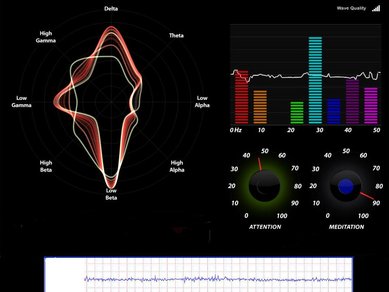
Fig. 6 EEG Display
How to read the charts:
The multi-colored vertical bar graph on the right is the intensity of each individual brainwave and their sub-frequencies. Our brainwaves cover a wide bandwidth and can occupy several Hertz. The white horizontal line you see imposed over the vertical bar graph is raw brainwave data. The brainwave monitoring equipment uses an algorithm to create the image you see on the left. It is known as FFT (Fast Fourier Transform) and it permits us to see what brainwaves are dominant at any given time. Beneath the bar graph are two meters. One labeled Attention and the other Meditation. They chart both level of attention and level of meditation at any given time.
Magnetometer Strip Chart: At the bottom of the chart is a white colored chart with grids. This chart is a product of a large magnetometer which is monitoring naturally occurring magnetic energy emanating from the ground beneath a vortex. We look for magnetic activity as displayed in the white chart, (Natural Earth Magnetic In or Outflow), and what comparison we may see in "Raw Brainwave Data".
State of mind during the "in or outflow" of magnetic activity can be monitored by looking at the "Attention/ Meditation" Indicators. We also see what brainwave "s" are dominant at that particular time. Dominant Delta occurs during sleep. Theta and Alpha during relaxation and meditation. Beta is a product of awake, alert and active. Above Beta into Gamma is wide awake and very active. The baseline chart was recorded at the beginning of each outing and shows brainwave activity while no natural magnetic activity is present. In the baseline chart, all is quiet. When magnetic activity commences, synchronization of magnetic and brainwave phenomena is demonstrated.
Chart 2 correlations: Magnetic in and outflows have begun. Green tracing lines show what raw brainwave event coincides with what earth generated magnetic event. At this point Lonetree recorded both in and outflows of magnetic energy. It is not displayed in the chart but the magnetic energy emits or returns into the earth in a spiral motion. Outflow is indicated by a positive (upward) reading in the graph and inflow by a (downward) reading in the graph. It is evident the "Naturally Occurring Magnetic Energy" in Sedona has a distinct effect on "Human Brainwave Activity". More tests are needed with a number of volunteers to replicate and verify these findings. The final chart reflects magnetic activity subsiding and brainwave activity returning to normal. Volunteers can contact Lonetree at: blonetree at cox.net
Correlated magnetic flux and brainwave charts: http://sedonanomalies.weebly.com/brainwave-resonance.html
Charts for Magnetic Disturbance Cycle: http://sedonanomalies.com/
How to read the charts:
The multi-colored vertical bar graph on the right is the intensity of each individual brainwave and their sub-frequencies. Our brainwaves cover a wide bandwidth and can occupy several Hertz. The white horizontal line you see imposed over the vertical bar graph is raw brainwave data. The brainwave monitoring equipment uses an algorithm to create the image you see on the left. It is known as FFT (Fast Fourier Transform) and it permits us to see what brainwaves are dominant at any given time. Beneath the bar graph are two meters. One labeled Attention and the other Meditation. They chart both level of attention and level of meditation at any given time.
Magnetometer Strip Chart: At the bottom of the chart is a white colored chart with grids. This chart is a product of a large magnetometer which is monitoring naturally occurring magnetic energy emanating from the ground beneath a vortex. We look for magnetic activity as displayed in the white chart, (Natural Earth Magnetic In or Outflow), and what comparison we may see in "Raw Brainwave Data".
State of mind during the "in or outflow" of magnetic activity can be monitored by looking at the "Attention/ Meditation" Indicators. We also see what brainwave "s" are dominant at that particular time. Dominant Delta occurs during sleep. Theta and Alpha during relaxation and meditation. Beta is a product of awake, alert and active. Above Beta into Gamma is wide awake and very active. The baseline chart was recorded at the beginning of each outing and shows brainwave activity while no natural magnetic activity is present. In the baseline chart, all is quiet. When magnetic activity commences, synchronization of magnetic and brainwave phenomena is demonstrated.
Chart 2 correlations: Magnetic in and outflows have begun. Green tracing lines show what raw brainwave event coincides with what earth generated magnetic event. At this point Lonetree recorded both in and outflows of magnetic energy. It is not displayed in the chart but the magnetic energy emits or returns into the earth in a spiral motion. Outflow is indicated by a positive (upward) reading in the graph and inflow by a (downward) reading in the graph. It is evident the "Naturally Occurring Magnetic Energy" in Sedona has a distinct effect on "Human Brainwave Activity". More tests are needed with a number of volunteers to replicate and verify these findings. The final chart reflects magnetic activity subsiding and brainwave activity returning to normal. Volunteers can contact Lonetree at: blonetree at cox.net
Correlated magnetic flux and brainwave charts: http://sedonanomalies.weebly.com/brainwave-resonance.html
Charts for Magnetic Disturbance Cycle: http://sedonanomalies.com/
DISCUSSION
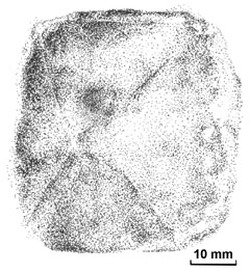
Fig. 7: Calcite crystal in the human pineal gland
Individual volunteers were monitored and recorded for brainwave changes while on various proven vortex sites, during sudden magnetic anomalies. A variety of effects consistent with the general theory of this paper were noted. Baselines were established for each participant in each discreet event.
Biomagnetic Minerals
The body contains many bioelectronic features. It contains crystalline structures, including calcite and magnetite, which may produce piezo-electric effects under external fields. There is a growing body of evidence that changes in the geomagnetic field affect biological systems (Joselyn, 1992). Artificial EMF sources, such as signal characteristics of cell phone base stations are complex, presenting the body with a combination of carrier waves in the microwave band. The interference patterns between these carrier frequencies, and the signal structures themselves, all occur within the context of the earth’s geomagnetic EMFs, including the Schumann resonance with which our bodies appear to be closely and naturally tuned, and our own internal bioelectromagnetic-frequencies.
Some studies indicate that physically stressed human biological systems may respond to the minute but measurable fluctuations in the geomagnetic field. In 1982 Maugh reported the finding of magnetite in mammals. The magnetic particles appeared to be surrounded by nervous tissue, suggesting the possibility of interaction between the particle and the brain. In 1983 Baker, Mather, and Kennaugh of the University of Manchester discovered magnetite in the ethmoid cavities of humans. It also appears in the hippocampus (Dunn, et al).
Despite our increased understanding of the functions and mechanisms of action of the pineal gland in the past few decades, the precise mechanism at a cellular level whereby electromagnetic radiation can produce biological effects was, until recently, unknown. However in the past decade or so, studies of the ferrous mineral magnetite show that it can act as a transducer linking ambient electromagnetic activity to cellular function. In addition – in both animals and humans – magnetite has been identified in most tissues examined, including the pineal gland (Lohmann & Johnsen, 2000; Schultheiss-Grassi & Dobson, 1999).
Induced electric currents (eddy currents) mechanism: During the past decade, a number of reports indicated that the mammalian pineal gland is magnetosensitive in terms of spatial orientation. This indication is based on observations that artificial alterations of the direction of the earth’s magnetic field (MF) markedly decreased the gland’s capability to synthesize melatonin. It was shown that magnetic field exposure itself did not affect the pineal. Rather, induced eddy currents in the animals, resulting from rapid On/Off switching transients of the artificially applied MF, affect the pineal gland either directly, or, more likely, indirectly, via an action on the neural input. The eddy current mechanism is most likely the explanation.
Every rapid change of a MF produces an electric field. Depending on the tissue exposed to such a field, an appropriate eddy current occurs, depending on the tissue’s conductivity. Hence, if an organism is exposed to a rapidly changing MF, an induced eddy current occurs that may affect the nervous system. This conclusion is supported by the observation that a nerve’s synaptic transmission is affected by exposure to electric fields.
The above mechanism may interact with biogenic magnetite and other metal ions in biosensor tissues and fluids, perhaps combining with other mechanisms mentioned herein, thus stimulating various liquid crystal and cellular responses to the information perceived.
Non-Linear Mechanisms research indicates that low-intensity, nonlinear, extremely low frequencies (ELF) and low intensity ELF pulse-modulated fields influence various physiological and behavioral processes in cells, tissue, animals, and humans. Major shifts in calcium efflux occur with fields that produce very small gradients in the extracellular space (interstitial fluids) surrounding cell membranes. The extracellular fields are far below transmembrane gradients associated with a typical synaptic depolarization. This implies that cells can act as sensitive detectors of ELF signals. This apparent capability has led to specific alteration of cell function, including hormone and insulin decrease, accelerated wound healing and bone growth, interference with nerve conduction, entrainment of cell transcription processes, and alteration of brain chemistry.
The effects range from alteration of the firing rates of neurons in the brain, calcium-ion binding disruption on cell surfaces in the brain, to response time…[and] respiration rate changes, and even putting an animal to sleep…[and] spectral components in the kHz range appear to cause effects selectively in bone tissue.
“The pineal gland … converts a neuronal signal into an endocrine output. … [It] is located close to the anatomical centre of the human brain.” “A total of 20 glands from [human] subjects ranging in age from 15 to 68 years were studied.” “Microcrystals were found in every gland in quantities ranging from 100 to 300 crystals per cubic millimetre of gland. No attempt was made to correlate the quantity of crystals with either the age of the subject or pathological details.” “Length dimensions of the crystals varied from 2-3 to about 20 micrometres.” “These results and the electron diffraction measurements definitely prove that the microcrystals are calcite.” “These calcite crystals bear a striking resemblance to the otoconia of the inner ear.” “The calcite in otoconia has been shown to exhibit piezoelectricity.” “If piezoelectricity were to exist [in the pineal calcite microcrystals], an electromechanical coupling mechanism to external electromagnetic fields may be possible.” (Baconnier)
Research implies that the production of the biomineral is under precise biological control. The crystal morphology was cubo-octahedral with the faces of adjacent crystals lying perpendicular to the chain axis. The magnetic moments of the particles are aligned along the chain axis and sum to produce a total moment dependent on the number of particles present in each chain. In the presence of the geomagnetic field, the mean moment for the particles will give a magnetic to thermal energy ratio of about 0.2.
from http://sedonaomalies.weebly.com "The Sedona Effect" by Iona Miller & Ben Lonetree
Individual volunteers were monitored and recorded for brainwave changes while on various proven vortex sites, during sudden magnetic anomalies. A variety of effects consistent with the general theory of this paper were noted. Baselines were established for each participant in each discreet event.
Biomagnetic Minerals
The body contains many bioelectronic features. It contains crystalline structures, including calcite and magnetite, which may produce piezo-electric effects under external fields. There is a growing body of evidence that changes in the geomagnetic field affect biological systems (Joselyn, 1992). Artificial EMF sources, such as signal characteristics of cell phone base stations are complex, presenting the body with a combination of carrier waves in the microwave band. The interference patterns between these carrier frequencies, and the signal structures themselves, all occur within the context of the earth’s geomagnetic EMFs, including the Schumann resonance with which our bodies appear to be closely and naturally tuned, and our own internal bioelectromagnetic-frequencies.
Some studies indicate that physically stressed human biological systems may respond to the minute but measurable fluctuations in the geomagnetic field. In 1982 Maugh reported the finding of magnetite in mammals. The magnetic particles appeared to be surrounded by nervous tissue, suggesting the possibility of interaction between the particle and the brain. In 1983 Baker, Mather, and Kennaugh of the University of Manchester discovered magnetite in the ethmoid cavities of humans. It also appears in the hippocampus (Dunn, et al).
Despite our increased understanding of the functions and mechanisms of action of the pineal gland in the past few decades, the precise mechanism at a cellular level whereby electromagnetic radiation can produce biological effects was, until recently, unknown. However in the past decade or so, studies of the ferrous mineral magnetite show that it can act as a transducer linking ambient electromagnetic activity to cellular function. In addition – in both animals and humans – magnetite has been identified in most tissues examined, including the pineal gland (Lohmann & Johnsen, 2000; Schultheiss-Grassi & Dobson, 1999).
Induced electric currents (eddy currents) mechanism: During the past decade, a number of reports indicated that the mammalian pineal gland is magnetosensitive in terms of spatial orientation. This indication is based on observations that artificial alterations of the direction of the earth’s magnetic field (MF) markedly decreased the gland’s capability to synthesize melatonin. It was shown that magnetic field exposure itself did not affect the pineal. Rather, induced eddy currents in the animals, resulting from rapid On/Off switching transients of the artificially applied MF, affect the pineal gland either directly, or, more likely, indirectly, via an action on the neural input. The eddy current mechanism is most likely the explanation.
Every rapid change of a MF produces an electric field. Depending on the tissue exposed to such a field, an appropriate eddy current occurs, depending on the tissue’s conductivity. Hence, if an organism is exposed to a rapidly changing MF, an induced eddy current occurs that may affect the nervous system. This conclusion is supported by the observation that a nerve’s synaptic transmission is affected by exposure to electric fields.
The above mechanism may interact with biogenic magnetite and other metal ions in biosensor tissues and fluids, perhaps combining with other mechanisms mentioned herein, thus stimulating various liquid crystal and cellular responses to the information perceived.
Non-Linear Mechanisms research indicates that low-intensity, nonlinear, extremely low frequencies (ELF) and low intensity ELF pulse-modulated fields influence various physiological and behavioral processes in cells, tissue, animals, and humans. Major shifts in calcium efflux occur with fields that produce very small gradients in the extracellular space (interstitial fluids) surrounding cell membranes. The extracellular fields are far below transmembrane gradients associated with a typical synaptic depolarization. This implies that cells can act as sensitive detectors of ELF signals. This apparent capability has led to specific alteration of cell function, including hormone and insulin decrease, accelerated wound healing and bone growth, interference with nerve conduction, entrainment of cell transcription processes, and alteration of brain chemistry.
The effects range from alteration of the firing rates of neurons in the brain, calcium-ion binding disruption on cell surfaces in the brain, to response time…[and] respiration rate changes, and even putting an animal to sleep…[and] spectral components in the kHz range appear to cause effects selectively in bone tissue.
“The pineal gland … converts a neuronal signal into an endocrine output. … [It] is located close to the anatomical centre of the human brain.” “A total of 20 glands from [human] subjects ranging in age from 15 to 68 years were studied.” “Microcrystals were found in every gland in quantities ranging from 100 to 300 crystals per cubic millimetre of gland. No attempt was made to correlate the quantity of crystals with either the age of the subject or pathological details.” “Length dimensions of the crystals varied from 2-3 to about 20 micrometres.” “These results and the electron diffraction measurements definitely prove that the microcrystals are calcite.” “These calcite crystals bear a striking resemblance to the otoconia of the inner ear.” “The calcite in otoconia has been shown to exhibit piezoelectricity.” “If piezoelectricity were to exist [in the pineal calcite microcrystals], an electromechanical coupling mechanism to external electromagnetic fields may be possible.” (Baconnier)
Research implies that the production of the biomineral is under precise biological control. The crystal morphology was cubo-octahedral with the faces of adjacent crystals lying perpendicular to the chain axis. The magnetic moments of the particles are aligned along the chain axis and sum to produce a total moment dependent on the number of particles present in each chain. In the presence of the geomagnetic field, the mean moment for the particles will give a magnetic to thermal energy ratio of about 0.2.
from http://sedonaomalies.weebly.com "The Sedona Effect" by Iona Miller & Ben Lonetree
Fig. 8 Magnetite Crystal Chain
Regeneration Instructions?
Biomineralization is chemically controlled. Much has been revealed about the human organisms on all levels but the question still asked by scientists is: What electromagnetic signal might tune to a magnetic resonant energy which would alter the metabolic genetic regulation to bring about growth and repair? Scientists are now asking the fundamental question: What are cuboctahedral magnetite crystals doing in the human brain?
Magnetite is a mineral, a magnetic iron ore belonging to the spinelle family. Research done in the late 1980s shows proteins, DNA, and transforming DNA function as piezoelectric crystal lattice structures in nature. The piezoelectric effect refers to that property of matter which may convert electromagnetic oscillations to mechanical vibrations and vice versa. These magnetite crystals were found to be organized into linear, membrane-bound chains a few micrometers in length, with up to 80 crystals per chain. Furthermore individual crystals are aligned along the length of the chain axes (the "easy" direction of magnetization).
Equilibrium Morphology
The crystal alignment has been interpreted as a biological mechanism for maximizing the magnetic moment per particle, as the direction yields approximately 3% higher saturation magnetization than do other directions. This prismatic particle shape is also uncommon in geological magnetite crystals of this size, which are usually octahedra.
The crystal morphology was found to be cubo-octahedral with the faces of adjacent crystals lying perpendicular to the chain axis(Coetzee). A change in conductance of a membrane ion channel in a neuron or a neuroepithelial cell was the earliest process that occurred in all forms of sensory transduction. Evidence from an appropriate model excitable cell or tissue that EMFs affect membrane currents or membrane potential supports the hypothesis that EMF transduction is a species of sensory transduction. (Sonnier)
Ferromagnetic crystals are manufactured by some cells, particularly astroglial cells, the predominant cell type in the brain. These are magnetic crystals (Fe3O4), aligned in chains of up to 80 crystals per chain, maximizing the magnetic moment of each crystal particle. These are membrane-bound biomineral magnetite crystals that are produced within each cell as needed, Unlike naturally occurring octahedral-shaped magnetite crystals, our astroglial cells generate a cubo-octahedral structure that is better suited to respond to magnetic fields. Each of these compass-like magnetite crystals have been shown to have a mechanical coupling to a mechanoreceptor in the cellular membrane.
Thus, they act as a sensor to magnetic fields and signal the inner "machinery" of the cell. This offers an insight into why our brains can operate may times faster than the process of synaptic firing and the movement of electrical potential (called action potential) from one neuron to another. These linear magnetic crystal domains are more than a million times more responsive to external magnetic fields than surrounding cellular non-magnetic structures. Some theorize that these magnetic particles interact with magnetic and electromagnetic fields and transduce their response into their host cell. Thus, they provide a means of responding to, and sensing our environment (Kirschvink, 1992).
fromhttp://sedonaomalies.weebly.com "The Sedona Effect" by Iona Miller & Ben Lonetree
Biomineralization is chemically controlled. Much has been revealed about the human organisms on all levels but the question still asked by scientists is: What electromagnetic signal might tune to a magnetic resonant energy which would alter the metabolic genetic regulation to bring about growth and repair? Scientists are now asking the fundamental question: What are cuboctahedral magnetite crystals doing in the human brain?
Magnetite is a mineral, a magnetic iron ore belonging to the spinelle family. Research done in the late 1980s shows proteins, DNA, and transforming DNA function as piezoelectric crystal lattice structures in nature. The piezoelectric effect refers to that property of matter which may convert electromagnetic oscillations to mechanical vibrations and vice versa. These magnetite crystals were found to be organized into linear, membrane-bound chains a few micrometers in length, with up to 80 crystals per chain. Furthermore individual crystals are aligned along the length of the chain axes (the "easy" direction of magnetization).
Equilibrium Morphology
The crystal alignment has been interpreted as a biological mechanism for maximizing the magnetic moment per particle, as the direction yields approximately 3% higher saturation magnetization than do other directions. This prismatic particle shape is also uncommon in geological magnetite crystals of this size, which are usually octahedra.
The crystal morphology was found to be cubo-octahedral with the faces of adjacent crystals lying perpendicular to the chain axis(Coetzee). A change in conductance of a membrane ion channel in a neuron or a neuroepithelial cell was the earliest process that occurred in all forms of sensory transduction. Evidence from an appropriate model excitable cell or tissue that EMFs affect membrane currents or membrane potential supports the hypothesis that EMF transduction is a species of sensory transduction. (Sonnier)
Ferromagnetic crystals are manufactured by some cells, particularly astroglial cells, the predominant cell type in the brain. These are magnetic crystals (Fe3O4), aligned in chains of up to 80 crystals per chain, maximizing the magnetic moment of each crystal particle. These are membrane-bound biomineral magnetite crystals that are produced within each cell as needed, Unlike naturally occurring octahedral-shaped magnetite crystals, our astroglial cells generate a cubo-octahedral structure that is better suited to respond to magnetic fields. Each of these compass-like magnetite crystals have been shown to have a mechanical coupling to a mechanoreceptor in the cellular membrane.
Thus, they act as a sensor to magnetic fields and signal the inner "machinery" of the cell. This offers an insight into why our brains can operate may times faster than the process of synaptic firing and the movement of electrical potential (called action potential) from one neuron to another. These linear magnetic crystal domains are more than a million times more responsive to external magnetic fields than surrounding cellular non-magnetic structures. Some theorize that these magnetic particles interact with magnetic and electromagnetic fields and transduce their response into their host cell. Thus, they provide a means of responding to, and sensing our environment (Kirschvink, 1992).
fromhttp://sedonaomalies.weebly.com "The Sedona Effect" by Iona Miller & Ben Lonetree
Fig. 9 - Cuboctahedron "Jitterbug"
CONCLUSION

We have demonstrated there is close correlation between Sedona vortex magnetic anomalies (sudden magnetic events) and spontaneous brainwave changes in frequency and amplitude, that is further modulated by Schumann Resonance and plausibly accounts for reported psychophysical and psychosensory phenomena. Geomagnetic brainwave synchronization occurs spontaneously at vortex points during sudden magnetic events.
from http://sedonaomalies.weebly.com
"The Sedona Effect" by Iona Miller & Ben Lonetree
from http://sedonaomalies.weebly.com
"The Sedona Effect" by Iona Miller & Ben Lonetree
Iona Miller, Writer, Therapist, Artist
Iona Miller is a nonfiction writer for the academic and popular press, clinical hypnotherapist (ACHE) and multimedia artist. Her work is an omni-sensory fusion of intelligence, science-art, new physics, symbolism, source mysticism, futuring, and emergent paradigm shift, creating a unique viewpoint. She is interested in extraordinary human potential and experience, and the effects of doctrines of religion, science, psychology, and the arts. She serves on the Advisory Boards of Journal of Consciousness Exploration & Research, DNA Decipher Journal , and Scientific God Journal, as well as the Board of Directors of Medigrace, Inc., and Editorial Board of CRAFT (Community Resilience through Action for Future Transitions). Ms. Miller is published by Phanes Press, Destiny Books (Inner Traditions), Autonomedia, Nexus Magazine, Paranoia Magazine, Green Egg, DNA Decipher Journal, Scientific God Journal, Journal of Consciousness Exploration & Research, Dream Network, Journal of Nonlocality & Remote Mental Interactions (JNLRMI), Chaosophy Journal, OAK, PM&E, DNA Monthly, Antibothis, Pop Occulture, and more. Over the last 10 years Ms. Miller has coordinated the projects of MRU alumni from 3 decades, in intelligence, spyence, new physics, paranormal, creativity, consciousness studies, DNA research, superlearning, DIY mind control, biophysics, and other frontier science and blue sky experimentation. This work continues in a variety of forms and outlets.
CONTACT IONA MILLER - [email protected] or Subscribe at facebook.com/iona.miller
Video Channels: http://www.youtube.com/user/ionamiller?feature=watch and http://www.vimeo.com/user3547022
Iona Miller is a nonfiction writer for the academic and popular press, clinical hypnotherapist (ACHE) and multimedia artist. Her work is an omni-sensory fusion of intelligence, science-art, new physics, symbolism, source mysticism, futuring, and emergent paradigm shift, creating a unique viewpoint. She is interested in extraordinary human potential and experience, and the effects of doctrines of religion, science, psychology, and the arts. She serves on the Advisory Boards of Journal of Consciousness Exploration & Research, DNA Decipher Journal , and Scientific God Journal, as well as the Board of Directors of Medigrace, Inc., and Editorial Board of CRAFT (Community Resilience through Action for Future Transitions). Ms. Miller is published by Phanes Press, Destiny Books (Inner Traditions), Autonomedia, Nexus Magazine, Paranoia Magazine, Green Egg, DNA Decipher Journal, Scientific God Journal, Journal of Consciousness Exploration & Research, Dream Network, Journal of Nonlocality & Remote Mental Interactions (JNLRMI), Chaosophy Journal, OAK, PM&E, DNA Monthly, Antibothis, Pop Occulture, and more. Over the last 10 years Ms. Miller has coordinated the projects of MRU alumni from 3 decades, in intelligence, spyence, new physics, paranormal, creativity, consciousness studies, DNA research, superlearning, DIY mind control, biophysics, and other frontier science and blue sky experimentation. This work continues in a variety of forms and outlets.
CONTACT IONA MILLER - [email protected] or Subscribe at facebook.com/iona.miller
Video Channels: http://www.youtube.com/user/ionamiller?feature=watch and http://www.vimeo.com/user3547022
REFERENCES:
Baconnier S, Lang SB, Polomska M, Hilczer B, Berkovic G, Meshulam G (2002), ‘Calcite microcrystals in the pineal gland of the human brain: First physical and chemical studies’, Bioelectromagnetics, 23(7):488-495.
Becker R O (1989), The Body Electric, Quill.Becker R O (1990), Cross Currents: The perils of electropollution, the promise of electromedicine, Tarcher/Penguin.
Bäeuerlein, Edmund, Handbook of Biomineralization: Biomimetic and Bioinspired Chemisty, http://books.google.com/books?id=32XSXg4nUPQC&pg=PA160&lpg=PA160&dq=biogenic+magnetite&source=bl&ots=qayHpBxP2g&sig=r8X1yNmecjmRzaVkVtkjiDY7kAY&hl=en&ei=CJQFTc3jLZO2sAOIh7WSDQ&sa=X&oi=book_result&ct=result&resnum=2&ved=0CCAQ6AEwATgo#v=onepage&q&f=false
Beal, James, (2008) "EHS and Iron Overload: A Biogenic Magnetite Mechanism?" "Organism sensitivities to electric and magnetic field: biosystem liquid crystals & proposed interacting mechanisms" http://omega.twoday.net/stories/5362082/
Beal, James, "Biosystem Liquid Crystals and Potential Effects of Natural & Artificial Electromagnetic Fields (EMFs)", http://frontpage.simnet.is/vgv/jim1.htm
Coetzee, H., "Biomagnetism and Bio-Electromagnetism:The Foundation of Life", Future History, Volume 8, http://www.affs.org/html/biomagnetism.html
Cranfield, Charles , HG Wieser, Jaffar Al Maddan and Jon Dobson (2002), "Preliminary Evaluation of Nanoscale Biogenic Magnetite-Based Ferromagnetic Transduction Mechanisms for Mobile Phone Bioeffects", IEEE Transaction on NanoBioscience, http://www.mobile-research.ethz.ch/var/pub_cranfield_pref1.pdf
Edmonds, D.T., Electricity and Magnetism in Biological Systems, Oxford Univ. Press, 2003.
Farmer & Hannan (2003), "Investigations of Relatively Easy to Construct Antennas with Efficiency in Receiving Schumann Resonances", NASA.
Hautot, D. and Pankhurst, Q.A. and Khan, N. and Dobson, J. (2003) Preliminary evaluation of nanoscale biogenic magnetite in Alzheimer's disease brain tissue. Proceedings of The Royal Society B Biological Sciences , 270.
Ho, Mae-Wan, Fritz Albert Popp, Ulrich Warnke, Bioelectrodynamics and Biocommunication, pg. 116. Chapter 4, D.T. Edmonds, "Possible Mechanisms for Biological Effects of Weak ELF Electromagnetic Fields".
Ingber, Donald E., "The Architecture of Life" Scientific American, Jan. 1998. http://www.childrenshospital.org/research/ingber/PDF/1998/SciAmer-Ingber.pdf Joselyn J.A., 1992, The impact of solar flares and magnetic storms on humans EOS, 73(7): 81, 84-85.
King, Chris, "Cutting through the Enigma of Consciousness", JCER VI (9).
King, James, "Is There Life On Mars? Ask a Magnet"., http://www.astrobio.net/exclusive/2707/is-there-life-on-mars-ask-a-magnet
Kirschvink, J., et. al. "Magnetite Biomineralization In the Human Brain." Proc. Natl. Acad. Sci., Vol. 89, pp 7683-7687, Aug 1992.
Kirschvink, J.L., Biogenic Magnetite and EMF Effects
Kirschvink, J. "Can Weak ELF Magnetic Fields Produce Significant Effects onBiogenic Magnetite?" Project Abstracts, pg. 79, The Annual DOE/EPRI Review On Bioeffects of Electric & Magnetic Fields. Palm Springs CA, Nov 1995.
Joseph L. Kirschvink, Atsuko Kobayashi-Kirschvink, Juan C. Diaz-Ricci, and Steven J. Kirschvink, "Magnetite in Human Tissues: A Mechanism for the Biological Effects of Weak ELF Magnetic Fields",http://web.gps.caltech.edu/~jkirschvink/pdfs/KirschvinkBEMS92.pdf "...at least one terrestrial animal (bees) is capable of detecting earth-strength magnetic fields through a sensory process. In turn, the existence of this ability implies the presence of specialized receptors which interact at the cellularlevel with weak magnetic fields in a fashion exceeding thermal noise. A simple calculation shows that magnetosomes moving in response to earth-strength ELF fields are capable of opening trans-membrane ion channels, in a fashion sitnilar to those predicted by ionic resonance models. Hence, the presence of trace levels of biogenic magnetite in virtually all human tissues examined suggests that similar biophysical processes may explain a variety of weak field ELF bioeffects." Ionic resonance - Hence, at frequencies below about 10 Hz there should be minimal effects of alternating fields of virtually any strength, as the ion channels and membranes have enough time to respond.
Due to the apparent lack of a biophysical mechanism, the question of whether weak, low-frequency magnetic fields are able to influence living organisms has long been one of the most controversial subjects in any field of science. However, two developments during the past decade have changed this perception dramatically, the first being the discovery that many organisms, including humans, biochemically precipitate the ferrimagnetic mineral magnetite (Fe3O4). In the magnetotactic bacteria, the geomagnetic response is based on either biogenic magnetite or greigite (Fe3S4), and reasonably good evidence exists that this is also the case in higher animalshoney bee. Second, the development of simple behavioral conditioning experiments for training honey bees to discriminate magnetic fields demonstrates conclusively that at least one terrestrial animal is capable of detecting earth-strength magnetic fields through a sensory process. In turn, the existence of this ability implies the presence of specialized receptors which interact at the cellular level with weak magnetic fields in a fashion exceeding thermal noise. A simple calculation shows that magnetosomes moving in response to earth-strength ELF fields are capable of opening trans-membrane ion channels, in a fashion similar to those predicted by ionic resonance models. Hence, the presence of trace levels of biogenic magnetite in virtually all human tissues examined suggests that similar biophysical processes may explain a variety of weak field ELF bioeffects.
Kopke RD, Wassel RA, Mondalek F, Grady B, Chen K, Liu J, Gibson D, Dormer KJ., Magnetic nanoparticles: inner ear targeted molecule delivery and middle ear implant. http://www.ncbi.nlm.nih.gov/pubmed/16439835Lonetree, Ben, Seven Subtle Vibrations, Sedona.
Lonetree, Ben and Miller, Iona, "SIREN SONG OF THE EARTH: Investigating Vortex Theory & EM Signals", Nexus Magazine, Vol. 12, No. 2 Feb/Mar ’05, Int’l; Mar/Apr ‘05 North America. http://ionamiller2010.iwarp.com/whats_new_7.html
Mata, Néstor Hugo, "What is the level of radio-frequency waves that affect human health?", http://www.frbb.utn.edu.ar/electronica/grupo-investigacion/Publicaciones/irpa/What%20is%20the%20level%20of%20radio-frequency%20waves%20that%20afect%20human%20health%20_f_.pdf
McCartney, M.R. and R. E. Dunin-Borkowski, "MAGNETIC AND STRUCTURAL CHARACTERIZATION OF BIOGENIC MAGNETITE", http://www.rafaldb.com/papers/C-2002-08-Quebec-MandM-biogenic-magnetite.pdf
Miller, Barry William (2004), "SYNTHESIS AND CHARACTERIZATION OF FUNCTIONALIZED MAGNETITE NANOCOMPOSITE PARTICLES FOR TARGETING AND RETRIEVAL APPLICATIONS", http://etd.fcla.edu/UF/UFE0004820/miller_b.pdf
Miller, Iona, and Miller, Richard, "Schumann Resonance and Human Physiology", Nexus Magazine, Vol. 10, #3, April-May, 2003a http://ionamiller2010.iwarp.com/whats_new_6.html
Miller, Iona, and Miller, Richard, "HAARP's Threat to the Voice of the Planet," Nexus Magazine in Mar-Apr, 2003b http://ionamiller2010.iwarp.com/whats_new_5.html
Miller, Iona and Miller, Richard, "From Helix to Hologram," AUGUST – SEPTEMBER 2003c, Nexus Magazine. http://ionamiller2010.iwarp.com/whats_new_8.html
Milsom, John, Field geophysics, Volume 12, Issue 180, Persinger, Michael A. (1987). Neuropsychological Bases of God Beliefs. New York: Praeger.
G. C. Onyedim, Computer modelling of geomagnetic anomalies associated with block-faulting, http://www.sciencedirect.com/science?_ob=ArticleURL&_udi=B6V6S-473FM71-H&_user=10&_coverDate=03%2F31%2F1989&_rdoc=1&_fmt=high&_orig=search&_origin=search&_sort=d&_docanchor=&view=c&_searchStrId=1591179836&_rerunOrigin=google&_acct=C000050221&_version=1&_urlVersion=0&_userid=10&md5=698405a759da9edf3db9624af34b0ff0&searchtype=a
Pazur, Alexander, Characterisation of weak magnetic field effects in an aqueous glutamic acid solution by nonlinear dielectric spectroscopy and voltammetry, BioMagnetic Research and Technology 2004, 2:8, http://www.biomagres.com/content/2/1/8
Persinger, Michael (1989). “Psi Phenomena and Temporal Lobe Activity: The Geomagnetic Factor,” in L.A. Henkel and R. E. Berger (eds.), Research in Parapsychology 1988; Metuchen, NJ: Scarecrow Press, 1989.
Persinger, M. A. , (1983). "Geophysical variables and human behavior: VII. Specific prediction of UFO reports within the New Madrid states by solar-geomagnetic and seismic measures." Perceptual and Motor Skills, 56, 243-249.
Persinger, M. A. , (1993). "Geophysical variables and human behavior: LXXI. Differential contribution of geomagnetic activity to paranormal experiences concerning death and crises: An alternative to the ESP hypothesis". Perceptual and Motor Skills, 76, 555-562.
Persinger, M. A., & Derr, J. S. (1984). "Geophysical variables and human behavior: XIX. Strong temporal relationships between inclusive seismic measures and UFO reports within Washington state". Perceptual and Motor Skills, 59, 551-566.
Persinger, M. A., & Levesque, B. F. (1983). "Geophysical variables and human behavior: XII. The weather matrix accommodates large portions of variance of measured daily mood". Perceptual and Motor Skills, 57, 868-870.
Persinger, Michael A. (1989), "Psi Phenomena and Temporal Lobe Activity: The Geomagnetic Factor," in I.A. Henkel and R. E. Berger (eds.) Research in Parapsychology 1988, Metuchen, NJ: Scarcrow Press.
Persinger M.A., & Krippner S. (1989). "Dream ESP experiments and geomagnetic activity". Journal of the American Society of Psychical Research, 83, 101- 106.
Persinger, M. A. and Makarec, K. (1987). “Temporal Lobe Epilsepsy Signs and Correlative Behaviors Displayed by Normal Populations,” Journal of General Psychology, 114, 1987, pp. 179-185.
Persinger, M. A. (1975). “ELF Waves and ESP”; New Horizons, I(5), January 1975, pp.232-235.
Persinger, M. A. , (1983). "Religious and mystical experiences as artifacts of temporal lobe function". Perceptual and Motor Skills, 57, 1255-1262.
Persinger, M. A. , (1985). "Geophysical variables and human behavior: XXX. Intense paranormal experiences occur during days of quiet, global geomagnetic activity". Perceptual and Motor Skills, 61, 320-322.
Persinger, M. A., & Valliant, P. M. (1985). "Temporal lobe signs and reports of subjective paranormal experiences in a normal population: A replication". Perceptual and Motor Skills, 60, 903-909.
Roffey, Leanne (1994), "The bioelectronic basis for "healing energies"; charge and field effects as a basis for complementary medical techniques", in M.J. Allen, S. F. Cleary & A.E. Sowers (eds.) Charge and Field Effects in Biosystems -- 4, pp. 480-497. Singapore: World Scientific.
Ryan, Adrian, "New Insights into the Links between ESP and Geomagnetic Activity"
Simon, Baconnier, Lang Sidney B., De Seze Rene, "New Crystal in the Pineal Gland: Characterization and Potential Role in Electromechano-Transduction", http://fedgeno.com/documents/crystal-in-the-pineal-gland.pdf "The pineal gland is a neuroendocrine transducer secreting melatonin, responsible for the physiological circadian rhythm control. A new form of biomineralization has been studied in the human pineal gland. It consists of small crystals that are less than 20 μm in length. These crystals could be responsible for an electromechanical biological transduction mechanism in the pineal gland due to their structure and piezoelectric properties."
Sonnier, Harold and Marino, Andrew, "SENSORY TRANSDUCTION AS A PROPOSED MODEL FOR BIOLOGICAL DETECTION OF ELECTROMAGNETIC FIELDS", http://www.scribd.com/doc/14050025/Model-for-biological-detection-of-EMF
Weiss, B.P., Kim,S., Kirschvink, J.L., Kopp, R.E., Sankaran M., Kobayashi, A., & Komeili, A. "Ferromagnetic resonance and low temperature magnetic tests for biogenic magnetite", Earth & Planetary Science Letters224, 73-89.
Winklhofer, M., "Biogenic Mangetite and Magnetic Sensitivity in Organisms" http://ipul.lv/pamir/cd/vol.I/riga-pamir-vol.I-33.pdf
Additional References:
Persinger, M.A. Geophysical variables and behavior: LV. Predicting the details of visitor experiences and the personality of experiments: The temporal lobe factor. Perceptual and Motor Skills, 1989, 68, 55-65.
DeSano, C.F., & Persinger, M.A. Geophysical variables and behavior: XXXIX. Alterations in imaginings and suggestibility during brief magnetic field exposures. Perceptual and Motor Skills, 1987, 64, 968-970.
Ruttan, L., Persinger, M.A., & Koren, S. Enhancement of temporal lobe-related experiences during brief exposures to milligauss intensity extremely low frequency magnetic fields. Journal of Bioelectricity, 1990, 9(1), 33-54.
Arango, M.A., & Persinger, M.A. Geophysical variables and behavior: LII. Decreased geomagnetic activity and spontaneous telepathic experiences from the Sidgwick collection. Perceptual and Motor Skills, 1988, 67, 907-910.
Persinger, M.A. (1987). Spontaneous telepathic experiences from phantasms of the living and low global geomagnetic activity. The Journal of the American Society for Psychical Research, 83, 23-36.
Mantle, E., & Persinger, M.A. Alterations in subjective evaluations during acute exposures to 5-Hz but not 9-Hz magnetic field devices. Journal of Bioelectricity, 1983, 2, 5-14.
Persinger, M.A. Global geomagnetic activity and anomalous psychological experiences concerning death and crisis: further replications. Society for Scientific Exploration. Sixth Annual Meeting (Austin, Texas), May 29-30, 1987.
Persinger, M.A. The problems of human exposure to ELF magnetic fields. Keynote Address. PACE Conference. Learned Societies. Ottawa, Ontario, Canada, June 1982.
Persinger, M.A. Geophysical variables and behavior: LXXI. Differential contribution of geomagnetic activity to paranormal experiences concerning death and crisis: An alternative to the ESP hypothesis. Perceptual and Motor Skills, 1993, 76, 555-562.
Persinger, M.A. (1987). Spontaneous telepathic experiences from phantasms of the living and low global geomagnetic activity. The Journal of the American Society for Psychical Research, 83, 23-36.
& Krippner, S & Persinger, M.A., . Experimental dream telepathy, clairvoyance and geomagnetic activity. Journal of the American Society for Psychical Research, 1989, 83, 101-116.
Lewicki, D.R., Schaut, G.H. & Persinger, M.A. (1987). Geophysical variables and behavior: XIV. Days of subjective precognitive experiences and the days before the actual events display correlated geomagnetic activity. Perceptual & Motor Skills, 65(1), 173-174.
Lewicki, D.R., Schaut, G.H., & Persinger, M.A. Geophysical variables and behavior: XLIV. Days of subjective precognitive experiences and the days before the actual events display correlated geomagnetic activity. Perceptual and Motor Skills, 1987, 65, 173-174.Lowenstam H A, Weiner S., On Biomineralization (Oxford: Oxford. Univ. Press, 1989).
Persinger, M.A. and Schaut G.B. (1988). Geomagnetic factors in subject telepathic, precognitive and postmortem experiences. The Journal of the American Society for Psychical Research, 82, 217-235.
Schaut, G.B. & Persinger, M.A., (Presented). Intense subjective experiences occur during days of quiet, global geomagnetic activity. Presented at the 100th year Anniversary of the American Society for Psychical Research: The 28th Annual Convention of the Parapsychological Association), 12-16 August, 1985, Tufts University, Medford, Mass.
Persinger, M.A. (1985). Geophysical variables and behavior: XXX. Intense paranormal experiences occur during days of quite, global, geomagnetic activity. Perceptual & Motor Skills, 61, 320-322.
Schaut, G.B. & Persinger, M.A. (1985). Geophysical variables and behavior: XXXI. Global geomagnetic activity during spontaneous paranormal experiences: A replication. Perceptual & Motor Skills, 61(2), 412-414.
Gearhart, L., & Persinger, M.A. Geophysical variables and human behavior. Onsets of historical and contemporary poltergeist episodes occurred with sudden increases in geomagnetic activity. Perceptual and Motor Skills, 1986, 62, 463-466.
Persinger, M.A. (1987). Spontaneous telepathic experiences from phantasms of the living and low global geomagnetic activity. The Journal of the American Society for Psychical Research, 83, 23-36.
Lewicki, D.R., Schaut, G.H. & Persinger, M.A. (1987). Geophysical variables and behavior: XIV. Days of subjective precognitive experiences and the days before the actual events display correlated geomagnetic activity. Perceptual & Motor Skills, 65(1), 173-174.
Lewicki, D.R., Schaut, G.H., & Persinger, M.A. Geophysical variables and behavior: XLIV. Days of subjective precognitive experiences and the days before the actual events display correlated geomagnetic activity. Perceptual and Motor Skills, 1987, 65, 173-174.
Persinger, M.A. and Schaut G.B. (1988). Geomagnetic factors in subject telepathic, precognitive and postmortem experiences. The Journal of the American Society for Psychical Research, 82, 217-235.
Arango, M.A., & Persinger, M.A. Geophysical variables and behavior: LII. Decreased geomagnetic activity and spontaneous telepathic experiences from the Sidgwick collection. Perceptual and Motor Skills, 1988, 67, 907-910.
Krippner, S. and Persinger, M.A. (1993). Enhancement of accuracy of telepathic dreams during periods of decreased geomagnetic activity: The William E. experiments. Proceedings of the 36th Annual Parapsychological Association 36th convention (pp. 126-131). Toronto, Canada.
Persinger, M.A., Hart, B., & Thomas, A.W. Geophysical variables and behavior: LXXX. Periodicities and energetic characteristics of a strobe-light luminosity during a geomagnetic storm. Perceptual and Motor Skills, 1996, 82, 683-688.
Persinger, M.A. Feelings of past lives as expected perturbations within the neurocognitive processes that generate the sense of self: contributions from limbic lability and vectorial hemisphericity. Perceptual and Motor Skills, 1996, 83, 1107-1121.
Derr, J. S. and Persinger, M. A. Geophysical variables and behavior: Annual January rainfall may modulate the incidence of luminous phenomena within the San Francisco Basin. (in revision).
Koren SA, Persinger MA. Possible disruption of remote viewing by complex weak magnetic fields around the stimulus site and the possibility of accessing real phase space: a pilot study. Percept Mot Skills. 2002 Dec;95(3 Pt 1):989-98.
Persinger MA, Roll WG, Tiller SG, Koren SA, Cook CM. Remote viewing with the artist Ingo Swann: neuropsychological profile, electroencephalographic correlates, magnetic resonance imaging (MRI), and possible mechanisms. Percept Mot Skills. 2002 Jun;94(3 Pt 1):927-49.
Persinger, M.A. (Ed.). ELF and VLF Electromagnetic Field Effects. New York: Plenum Press, 1974.
Persinger, M.A. 1979. "Recent Studies (since 1973) on the Biological Effects of Low and Extremely Low Frequency Electromagnetic Fields." In S.W. Tromp (Ed.), Biometeorological Survey. Vol. 1, 1973_1974. London: Heyden, pp. 68-73.
Persinger, M.A. 1983. The Effects of Transient or Intense Geomagnetic or Related Global Perturbation Upon Human Group behavior." In J.B. Calhoun (Ed.), Perspectives on Adaptation, Environment and Population. New York: Praeger, pp. 28-30.
Persinger, M.A., Ludwig, W., & Ossenkopp, K._P. Physiological effects of electromagnetic fields in the ELF region. Archives fur Meteorologie, Geophysiks und Bioklimatologie, Series B, 1973, 21, 110-116.
Persinger, M.A., Ludwig, H.W., & Ossenkopp, K._P. Psychophysiological effects of extremely low frequency electromagnetic fields: a review. Perceptual and Motor Skills, 1973, 36, 1131-1159.
Baconnier S, Lang SB, Polomska M, Hilczer B, Berkovic G, Meshulam G (2002), ‘Calcite microcrystals in the pineal gland of the human brain: First physical and chemical studies’, Bioelectromagnetics, 23(7):488-495.
Becker R O (1989), The Body Electric, Quill.Becker R O (1990), Cross Currents: The perils of electropollution, the promise of electromedicine, Tarcher/Penguin.
Bäeuerlein, Edmund, Handbook of Biomineralization: Biomimetic and Bioinspired Chemisty, http://books.google.com/books?id=32XSXg4nUPQC&pg=PA160&lpg=PA160&dq=biogenic+magnetite&source=bl&ots=qayHpBxP2g&sig=r8X1yNmecjmRzaVkVtkjiDY7kAY&hl=en&ei=CJQFTc3jLZO2sAOIh7WSDQ&sa=X&oi=book_result&ct=result&resnum=2&ved=0CCAQ6AEwATgo#v=onepage&q&f=false
Beal, James, (2008) "EHS and Iron Overload: A Biogenic Magnetite Mechanism?" "Organism sensitivities to electric and magnetic field: biosystem liquid crystals & proposed interacting mechanisms" http://omega.twoday.net/stories/5362082/
Beal, James, "Biosystem Liquid Crystals and Potential Effects of Natural & Artificial Electromagnetic Fields (EMFs)", http://frontpage.simnet.is/vgv/jim1.htm
Coetzee, H., "Biomagnetism and Bio-Electromagnetism:The Foundation of Life", Future History, Volume 8, http://www.affs.org/html/biomagnetism.html
Cranfield, Charles , HG Wieser, Jaffar Al Maddan and Jon Dobson (2002), "Preliminary Evaluation of Nanoscale Biogenic Magnetite-Based Ferromagnetic Transduction Mechanisms for Mobile Phone Bioeffects", IEEE Transaction on NanoBioscience, http://www.mobile-research.ethz.ch/var/pub_cranfield_pref1.pdf
Edmonds, D.T., Electricity and Magnetism in Biological Systems, Oxford Univ. Press, 2003.
Farmer & Hannan (2003), "Investigations of Relatively Easy to Construct Antennas with Efficiency in Receiving Schumann Resonances", NASA.
Hautot, D. and Pankhurst, Q.A. and Khan, N. and Dobson, J. (2003) Preliminary evaluation of nanoscale biogenic magnetite in Alzheimer's disease brain tissue. Proceedings of The Royal Society B Biological Sciences , 270.
Ho, Mae-Wan, Fritz Albert Popp, Ulrich Warnke, Bioelectrodynamics and Biocommunication, pg. 116. Chapter 4, D.T. Edmonds, "Possible Mechanisms for Biological Effects of Weak ELF Electromagnetic Fields".
Ingber, Donald E., "The Architecture of Life" Scientific American, Jan. 1998. http://www.childrenshospital.org/research/ingber/PDF/1998/SciAmer-Ingber.pdf Joselyn J.A., 1992, The impact of solar flares and magnetic storms on humans EOS, 73(7): 81, 84-85.
King, Chris, "Cutting through the Enigma of Consciousness", JCER VI (9).
King, James, "Is There Life On Mars? Ask a Magnet"., http://www.astrobio.net/exclusive/2707/is-there-life-on-mars-ask-a-magnet
Kirschvink, J., et. al. "Magnetite Biomineralization In the Human Brain." Proc. Natl. Acad. Sci., Vol. 89, pp 7683-7687, Aug 1992.
Kirschvink, J.L., Biogenic Magnetite and EMF Effects
Kirschvink, J. "Can Weak ELF Magnetic Fields Produce Significant Effects onBiogenic Magnetite?" Project Abstracts, pg. 79, The Annual DOE/EPRI Review On Bioeffects of Electric & Magnetic Fields. Palm Springs CA, Nov 1995.
Joseph L. Kirschvink, Atsuko Kobayashi-Kirschvink, Juan C. Diaz-Ricci, and Steven J. Kirschvink, "Magnetite in Human Tissues: A Mechanism for the Biological Effects of Weak ELF Magnetic Fields",http://web.gps.caltech.edu/~jkirschvink/pdfs/KirschvinkBEMS92.pdf "...at least one terrestrial animal (bees) is capable of detecting earth-strength magnetic fields through a sensory process. In turn, the existence of this ability implies the presence of specialized receptors which interact at the cellularlevel with weak magnetic fields in a fashion exceeding thermal noise. A simple calculation shows that magnetosomes moving in response to earth-strength ELF fields are capable of opening trans-membrane ion channels, in a fashion sitnilar to those predicted by ionic resonance models. Hence, the presence of trace levels of biogenic magnetite in virtually all human tissues examined suggests that similar biophysical processes may explain a variety of weak field ELF bioeffects." Ionic resonance - Hence, at frequencies below about 10 Hz there should be minimal effects of alternating fields of virtually any strength, as the ion channels and membranes have enough time to respond.
Due to the apparent lack of a biophysical mechanism, the question of whether weak, low-frequency magnetic fields are able to influence living organisms has long been one of the most controversial subjects in any field of science. However, two developments during the past decade have changed this perception dramatically, the first being the discovery that many organisms, including humans, biochemically precipitate the ferrimagnetic mineral magnetite (Fe3O4). In the magnetotactic bacteria, the geomagnetic response is based on either biogenic magnetite or greigite (Fe3S4), and reasonably good evidence exists that this is also the case in higher animalshoney bee. Second, the development of simple behavioral conditioning experiments for training honey bees to discriminate magnetic fields demonstrates conclusively that at least one terrestrial animal is capable of detecting earth-strength magnetic fields through a sensory process. In turn, the existence of this ability implies the presence of specialized receptors which interact at the cellular level with weak magnetic fields in a fashion exceeding thermal noise. A simple calculation shows that magnetosomes moving in response to earth-strength ELF fields are capable of opening trans-membrane ion channels, in a fashion similar to those predicted by ionic resonance models. Hence, the presence of trace levels of biogenic magnetite in virtually all human tissues examined suggests that similar biophysical processes may explain a variety of weak field ELF bioeffects.
Kopke RD, Wassel RA, Mondalek F, Grady B, Chen K, Liu J, Gibson D, Dormer KJ., Magnetic nanoparticles: inner ear targeted molecule delivery and middle ear implant. http://www.ncbi.nlm.nih.gov/pubmed/16439835Lonetree, Ben, Seven Subtle Vibrations, Sedona.
Lonetree, Ben and Miller, Iona, "SIREN SONG OF THE EARTH: Investigating Vortex Theory & EM Signals", Nexus Magazine, Vol. 12, No. 2 Feb/Mar ’05, Int’l; Mar/Apr ‘05 North America. http://ionamiller2010.iwarp.com/whats_new_7.html
Mata, Néstor Hugo, "What is the level of radio-frequency waves that affect human health?", http://www.frbb.utn.edu.ar/electronica/grupo-investigacion/Publicaciones/irpa/What%20is%20the%20level%20of%20radio-frequency%20waves%20that%20afect%20human%20health%20_f_.pdf
McCartney, M.R. and R. E. Dunin-Borkowski, "MAGNETIC AND STRUCTURAL CHARACTERIZATION OF BIOGENIC MAGNETITE", http://www.rafaldb.com/papers/C-2002-08-Quebec-MandM-biogenic-magnetite.pdf
Miller, Barry William (2004), "SYNTHESIS AND CHARACTERIZATION OF FUNCTIONALIZED MAGNETITE NANOCOMPOSITE PARTICLES FOR TARGETING AND RETRIEVAL APPLICATIONS", http://etd.fcla.edu/UF/UFE0004820/miller_b.pdf
Miller, Iona, and Miller, Richard, "Schumann Resonance and Human Physiology", Nexus Magazine, Vol. 10, #3, April-May, 2003a http://ionamiller2010.iwarp.com/whats_new_6.html
Miller, Iona, and Miller, Richard, "HAARP's Threat to the Voice of the Planet," Nexus Magazine in Mar-Apr, 2003b http://ionamiller2010.iwarp.com/whats_new_5.html
Miller, Iona and Miller, Richard, "From Helix to Hologram," AUGUST – SEPTEMBER 2003c, Nexus Magazine. http://ionamiller2010.iwarp.com/whats_new_8.html
Milsom, John, Field geophysics, Volume 12, Issue 180, Persinger, Michael A. (1987). Neuropsychological Bases of God Beliefs. New York: Praeger.
G. C. Onyedim, Computer modelling of geomagnetic anomalies associated with block-faulting, http://www.sciencedirect.com/science?_ob=ArticleURL&_udi=B6V6S-473FM71-H&_user=10&_coverDate=03%2F31%2F1989&_rdoc=1&_fmt=high&_orig=search&_origin=search&_sort=d&_docanchor=&view=c&_searchStrId=1591179836&_rerunOrigin=google&_acct=C000050221&_version=1&_urlVersion=0&_userid=10&md5=698405a759da9edf3db9624af34b0ff0&searchtype=a
Pazur, Alexander, Characterisation of weak magnetic field effects in an aqueous glutamic acid solution by nonlinear dielectric spectroscopy and voltammetry, BioMagnetic Research and Technology 2004, 2:8, http://www.biomagres.com/content/2/1/8
Persinger, Michael (1989). “Psi Phenomena and Temporal Lobe Activity: The Geomagnetic Factor,” in L.A. Henkel and R. E. Berger (eds.), Research in Parapsychology 1988; Metuchen, NJ: Scarecrow Press, 1989.
Persinger, M. A. , (1983). "Geophysical variables and human behavior: VII. Specific prediction of UFO reports within the New Madrid states by solar-geomagnetic and seismic measures." Perceptual and Motor Skills, 56, 243-249.
Persinger, M. A. , (1993). "Geophysical variables and human behavior: LXXI. Differential contribution of geomagnetic activity to paranormal experiences concerning death and crises: An alternative to the ESP hypothesis". Perceptual and Motor Skills, 76, 555-562.
Persinger, M. A., & Derr, J. S. (1984). "Geophysical variables and human behavior: XIX. Strong temporal relationships between inclusive seismic measures and UFO reports within Washington state". Perceptual and Motor Skills, 59, 551-566.
Persinger, M. A., & Levesque, B. F. (1983). "Geophysical variables and human behavior: XII. The weather matrix accommodates large portions of variance of measured daily mood". Perceptual and Motor Skills, 57, 868-870.
Persinger, Michael A. (1989), "Psi Phenomena and Temporal Lobe Activity: The Geomagnetic Factor," in I.A. Henkel and R. E. Berger (eds.) Research in Parapsychology 1988, Metuchen, NJ: Scarcrow Press.
Persinger M.A., & Krippner S. (1989). "Dream ESP experiments and geomagnetic activity". Journal of the American Society of Psychical Research, 83, 101- 106.
Persinger, M. A. and Makarec, K. (1987). “Temporal Lobe Epilsepsy Signs and Correlative Behaviors Displayed by Normal Populations,” Journal of General Psychology, 114, 1987, pp. 179-185.
Persinger, M. A. (1975). “ELF Waves and ESP”; New Horizons, I(5), January 1975, pp.232-235.
Persinger, M. A. , (1983). "Religious and mystical experiences as artifacts of temporal lobe function". Perceptual and Motor Skills, 57, 1255-1262.
Persinger, M. A. , (1985). "Geophysical variables and human behavior: XXX. Intense paranormal experiences occur during days of quiet, global geomagnetic activity". Perceptual and Motor Skills, 61, 320-322.
Persinger, M. A., & Valliant, P. M. (1985). "Temporal lobe signs and reports of subjective paranormal experiences in a normal population: A replication". Perceptual and Motor Skills, 60, 903-909.
Roffey, Leanne (1994), "The bioelectronic basis for "healing energies"; charge and field effects as a basis for complementary medical techniques", in M.J. Allen, S. F. Cleary & A.E. Sowers (eds.) Charge and Field Effects in Biosystems -- 4, pp. 480-497. Singapore: World Scientific.
Ryan, Adrian, "New Insights into the Links between ESP and Geomagnetic Activity"
Simon, Baconnier, Lang Sidney B., De Seze Rene, "New Crystal in the Pineal Gland: Characterization and Potential Role in Electromechano-Transduction", http://fedgeno.com/documents/crystal-in-the-pineal-gland.pdf "The pineal gland is a neuroendocrine transducer secreting melatonin, responsible for the physiological circadian rhythm control. A new form of biomineralization has been studied in the human pineal gland. It consists of small crystals that are less than 20 μm in length. These crystals could be responsible for an electromechanical biological transduction mechanism in the pineal gland due to their structure and piezoelectric properties."
Sonnier, Harold and Marino, Andrew, "SENSORY TRANSDUCTION AS A PROPOSED MODEL FOR BIOLOGICAL DETECTION OF ELECTROMAGNETIC FIELDS", http://www.scribd.com/doc/14050025/Model-for-biological-detection-of-EMF
Weiss, B.P., Kim,S., Kirschvink, J.L., Kopp, R.E., Sankaran M., Kobayashi, A., & Komeili, A. "Ferromagnetic resonance and low temperature magnetic tests for biogenic magnetite", Earth & Planetary Science Letters224, 73-89.
Winklhofer, M., "Biogenic Mangetite and Magnetic Sensitivity in Organisms" http://ipul.lv/pamir/cd/vol.I/riga-pamir-vol.I-33.pdf
Additional References:
Persinger, M.A. Geophysical variables and behavior: LV. Predicting the details of visitor experiences and the personality of experiments: The temporal lobe factor. Perceptual and Motor Skills, 1989, 68, 55-65.
DeSano, C.F., & Persinger, M.A. Geophysical variables and behavior: XXXIX. Alterations in imaginings and suggestibility during brief magnetic field exposures. Perceptual and Motor Skills, 1987, 64, 968-970.
Ruttan, L., Persinger, M.A., & Koren, S. Enhancement of temporal lobe-related experiences during brief exposures to milligauss intensity extremely low frequency magnetic fields. Journal of Bioelectricity, 1990, 9(1), 33-54.
Arango, M.A., & Persinger, M.A. Geophysical variables and behavior: LII. Decreased geomagnetic activity and spontaneous telepathic experiences from the Sidgwick collection. Perceptual and Motor Skills, 1988, 67, 907-910.
Persinger, M.A. (1987). Spontaneous telepathic experiences from phantasms of the living and low global geomagnetic activity. The Journal of the American Society for Psychical Research, 83, 23-36.
Mantle, E., & Persinger, M.A. Alterations in subjective evaluations during acute exposures to 5-Hz but not 9-Hz magnetic field devices. Journal of Bioelectricity, 1983, 2, 5-14.
Persinger, M.A. Global geomagnetic activity and anomalous psychological experiences concerning death and crisis: further replications. Society for Scientific Exploration. Sixth Annual Meeting (Austin, Texas), May 29-30, 1987.
Persinger, M.A. The problems of human exposure to ELF magnetic fields. Keynote Address. PACE Conference. Learned Societies. Ottawa, Ontario, Canada, June 1982.
Persinger, M.A. Geophysical variables and behavior: LXXI. Differential contribution of geomagnetic activity to paranormal experiences concerning death and crisis: An alternative to the ESP hypothesis. Perceptual and Motor Skills, 1993, 76, 555-562.
Persinger, M.A. (1987). Spontaneous telepathic experiences from phantasms of the living and low global geomagnetic activity. The Journal of the American Society for Psychical Research, 83, 23-36.
& Krippner, S & Persinger, M.A., . Experimental dream telepathy, clairvoyance and geomagnetic activity. Journal of the American Society for Psychical Research, 1989, 83, 101-116.
Lewicki, D.R., Schaut, G.H. & Persinger, M.A. (1987). Geophysical variables and behavior: XIV. Days of subjective precognitive experiences and the days before the actual events display correlated geomagnetic activity. Perceptual & Motor Skills, 65(1), 173-174.
Lewicki, D.R., Schaut, G.H., & Persinger, M.A. Geophysical variables and behavior: XLIV. Days of subjective precognitive experiences and the days before the actual events display correlated geomagnetic activity. Perceptual and Motor Skills, 1987, 65, 173-174.Lowenstam H A, Weiner S., On Biomineralization (Oxford: Oxford. Univ. Press, 1989).
Persinger, M.A. and Schaut G.B. (1988). Geomagnetic factors in subject telepathic, precognitive and postmortem experiences. The Journal of the American Society for Psychical Research, 82, 217-235.
Schaut, G.B. & Persinger, M.A., (Presented). Intense subjective experiences occur during days of quiet, global geomagnetic activity. Presented at the 100th year Anniversary of the American Society for Psychical Research: The 28th Annual Convention of the Parapsychological Association), 12-16 August, 1985, Tufts University, Medford, Mass.
Persinger, M.A. (1985). Geophysical variables and behavior: XXX. Intense paranormal experiences occur during days of quite, global, geomagnetic activity. Perceptual & Motor Skills, 61, 320-322.
Schaut, G.B. & Persinger, M.A. (1985). Geophysical variables and behavior: XXXI. Global geomagnetic activity during spontaneous paranormal experiences: A replication. Perceptual & Motor Skills, 61(2), 412-414.
Gearhart, L., & Persinger, M.A. Geophysical variables and human behavior. Onsets of historical and contemporary poltergeist episodes occurred with sudden increases in geomagnetic activity. Perceptual and Motor Skills, 1986, 62, 463-466.
Persinger, M.A. (1987). Spontaneous telepathic experiences from phantasms of the living and low global geomagnetic activity. The Journal of the American Society for Psychical Research, 83, 23-36.
Lewicki, D.R., Schaut, G.H. & Persinger, M.A. (1987). Geophysical variables and behavior: XIV. Days of subjective precognitive experiences and the days before the actual events display correlated geomagnetic activity. Perceptual & Motor Skills, 65(1), 173-174.
Lewicki, D.R., Schaut, G.H., & Persinger, M.A. Geophysical variables and behavior: XLIV. Days of subjective precognitive experiences and the days before the actual events display correlated geomagnetic activity. Perceptual and Motor Skills, 1987, 65, 173-174.
Persinger, M.A. and Schaut G.B. (1988). Geomagnetic factors in subject telepathic, precognitive and postmortem experiences. The Journal of the American Society for Psychical Research, 82, 217-235.
Arango, M.A., & Persinger, M.A. Geophysical variables and behavior: LII. Decreased geomagnetic activity and spontaneous telepathic experiences from the Sidgwick collection. Perceptual and Motor Skills, 1988, 67, 907-910.
Krippner, S. and Persinger, M.A. (1993). Enhancement of accuracy of telepathic dreams during periods of decreased geomagnetic activity: The William E. experiments. Proceedings of the 36th Annual Parapsychological Association 36th convention (pp. 126-131). Toronto, Canada.
Persinger, M.A., Hart, B., & Thomas, A.W. Geophysical variables and behavior: LXXX. Periodicities and energetic characteristics of a strobe-light luminosity during a geomagnetic storm. Perceptual and Motor Skills, 1996, 82, 683-688.
Persinger, M.A. Feelings of past lives as expected perturbations within the neurocognitive processes that generate the sense of self: contributions from limbic lability and vectorial hemisphericity. Perceptual and Motor Skills, 1996, 83, 1107-1121.
Derr, J. S. and Persinger, M. A. Geophysical variables and behavior: Annual January rainfall may modulate the incidence of luminous phenomena within the San Francisco Basin. (in revision).
Koren SA, Persinger MA. Possible disruption of remote viewing by complex weak magnetic fields around the stimulus site and the possibility of accessing real phase space: a pilot study. Percept Mot Skills. 2002 Dec;95(3 Pt 1):989-98.
Persinger MA, Roll WG, Tiller SG, Koren SA, Cook CM. Remote viewing with the artist Ingo Swann: neuropsychological profile, electroencephalographic correlates, magnetic resonance imaging (MRI), and possible mechanisms. Percept Mot Skills. 2002 Jun;94(3 Pt 1):927-49.
Persinger, M.A. (Ed.). ELF and VLF Electromagnetic Field Effects. New York: Plenum Press, 1974.
Persinger, M.A. 1979. "Recent Studies (since 1973) on the Biological Effects of Low and Extremely Low Frequency Electromagnetic Fields." In S.W. Tromp (Ed.), Biometeorological Survey. Vol. 1, 1973_1974. London: Heyden, pp. 68-73.
Persinger, M.A. 1983. The Effects of Transient or Intense Geomagnetic or Related Global Perturbation Upon Human Group behavior." In J.B. Calhoun (Ed.), Perspectives on Adaptation, Environment and Population. New York: Praeger, pp. 28-30.
Persinger, M.A., Ludwig, W., & Ossenkopp, K._P. Physiological effects of electromagnetic fields in the ELF region. Archives fur Meteorologie, Geophysiks und Bioklimatologie, Series B, 1973, 21, 110-116.
Persinger, M.A., Ludwig, H.W., & Ossenkopp, K._P. Psychophysiological effects of extremely low frequency electromagnetic fields: a review. Perceptual and Motor Skills, 1973, 36, 1131-1159.
ADDENDUM: Professor J. Kirshvink, in his research essay “TEM investigations of biogenic magnetite extracted from the human hippocampus” demonstrated that within the human brain there exist, per each 4 gram of tissue, an average of 5 million small magnetite crystals (the substance which natural magnets are made of). The membranes that surround the brain (meninge membranes) contain more that 100 million of these small magnetite crystals per gram of brain tissue. Each magnetite crystal (Fe3O4), is linked to a small amount of magnetite (Fe2O3), and this, in turn, is protected by a membrane, which together constitute what is called a “magnetosome”. The magnetosome membrane is composed of different types or liquids and proteins, some of which are specific to this membrane. Magnetosomes are distributed within the nervous tissue in groups of 50 to 100 elements.
Magnetite is a good conductor of electrical fields, since it is approximately 6.000 times as conducting as any other biological matter. Therefore, magnetite is more sensitive to electromagnetic fields. Magnetosomes can be thought of as the organs of the senses which are capable of perceiving the variations of the electromagnetic fields that surround us.
We must take into account that the electromagnetic fields of microwaves have a considerable amount of energy. Those cells that do not contain magnetite crystals are easily pierced through by these microwaves, and they absorb only a small amount of them, approximately 0.046% of the energy of these microwaves. However, this is not the case with cells that contain such crystals. These cells can absorb up to 30% of the energy of the microwaves that go through them. This is consistent with the studies on energy absorption by the brain.
The atoms in all crystalline networks are capable of vibrating in unison. In the group of magnetite crystals, the microwaves have, through a magnetic-acoustic effect, a resonance that gives place to acoustic waves of the same frequency. Under the effect of microwaves, these ultrasounds, which are known as “phonons” (1), are sounds which the human ear cannot perceive. These ultrasounds spread their energy onto the cellular structures that surround the magnetosomes. Moreover, they create temporary openings on the membranes of the latter.
This later process causes the uncovering of the magnetite crystal, which then comes into contact with the rest of the elements that constitute the cell, and the iron atoms in the magnetite oxidize, thereby producing the appearance of free radicals. The free radicals generated can alter all the cellular membranes and harm the DNA, the nucleic acid of the cells, which is the carrier of our genes and the backbone of heredity.
900 MHz and 1900 MHz microwaves, used by GSM technology in mobile telecommunications, are waves which are pulsed and modulated in amplitude. They are, in fact, impulses emitted by the aerials. The frequency of these impulses is relatively low, of 217 Hz. Therefore, an electromagnetic field of low frequency is superimposed onto the proper electromagnetic fields of microwaves. Such electromagnetic fields act upon the magnetite crystals. Moreover, at a frequency of 217 Hz, found in the waves emitted by mobile telecommunication equipment, due to the complexity of this type of modulation, the 8 Hz and 2 Hz waves that are generated are capable of interfering with the alpha and delta waves emitted by our brain.
Bioelectrodynamics & Biocommunication, By Mae-Wan Ho, Fritz Albert Popp, Ulrich Warnke, pg. 116
USGS Magnetic Anomalies Map - Arizona & New Mexico
Color Key below
Color Key below
(c)2010-2017, Ben Lonetree & Iona Miller, All Rights Reserved on all original graphic and written content. If you mirror our works, pls include the authors' credit and URL LINK to this page, for reference.
Made with 100% recycled electrons.
Made with 100% recycled electrons.
